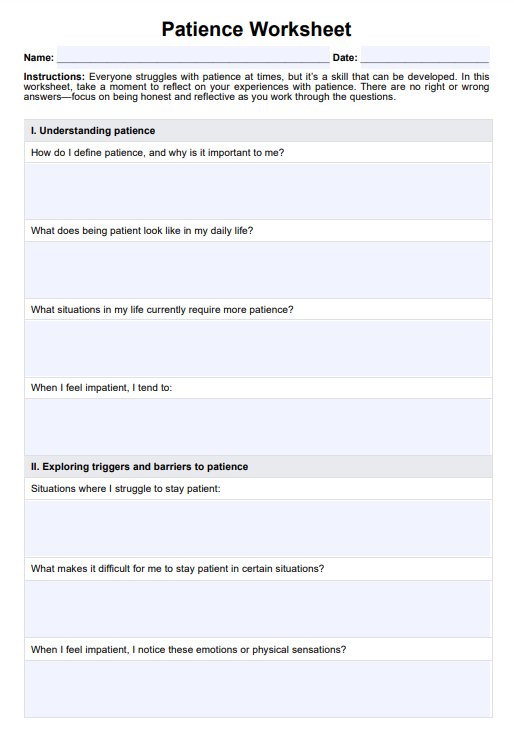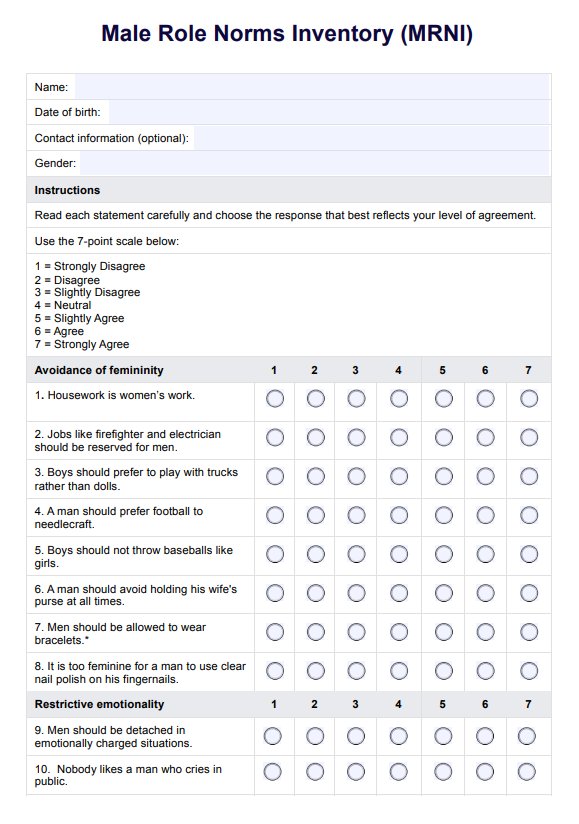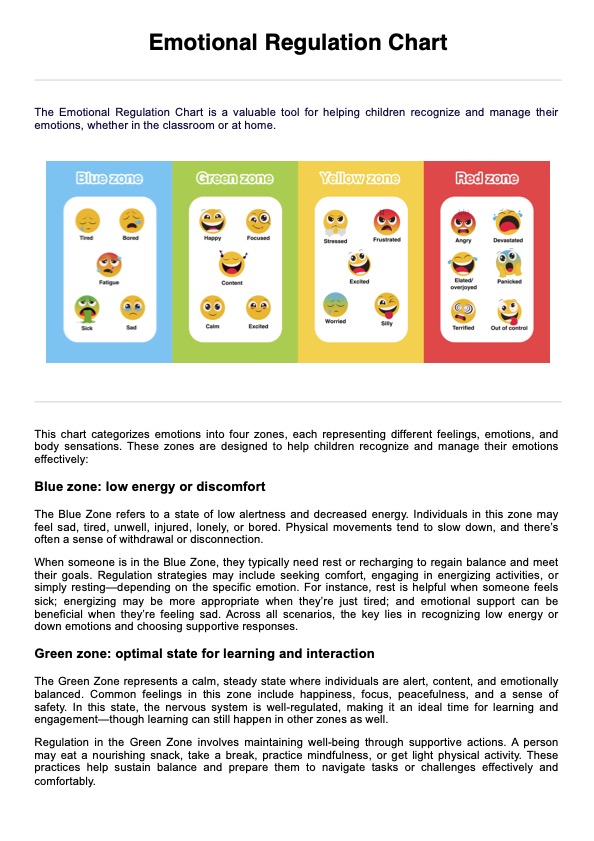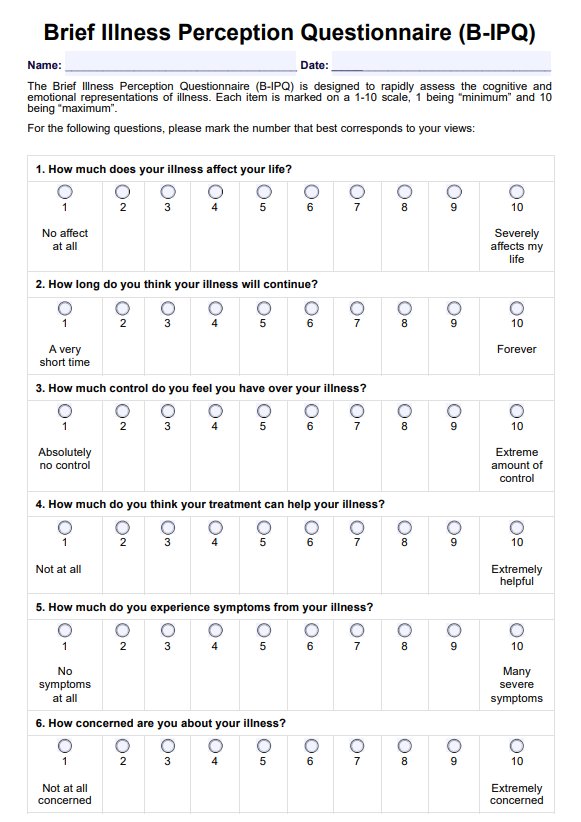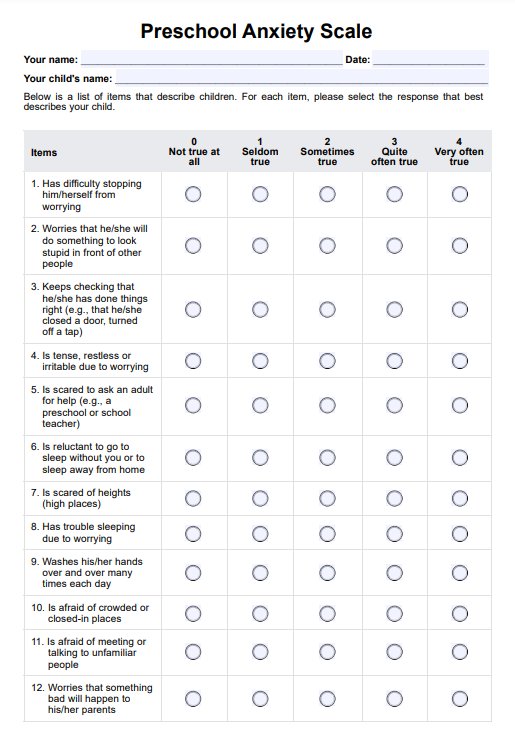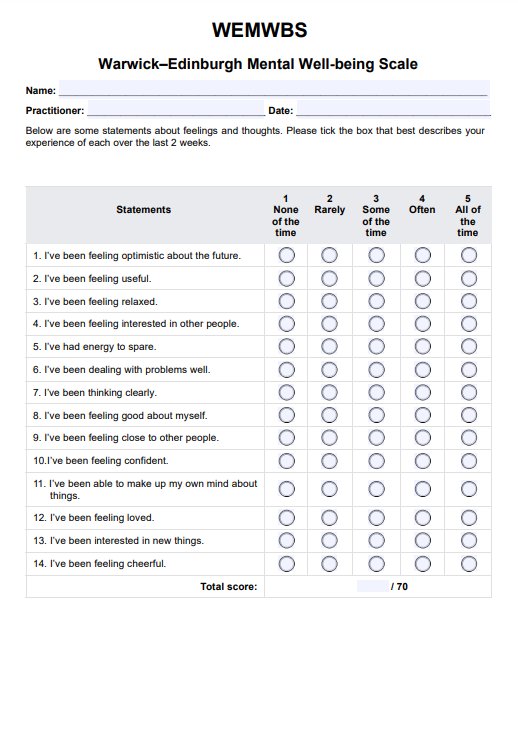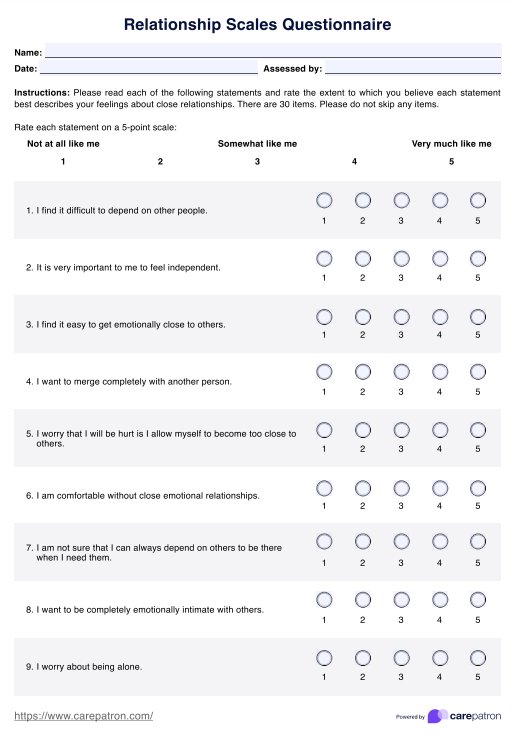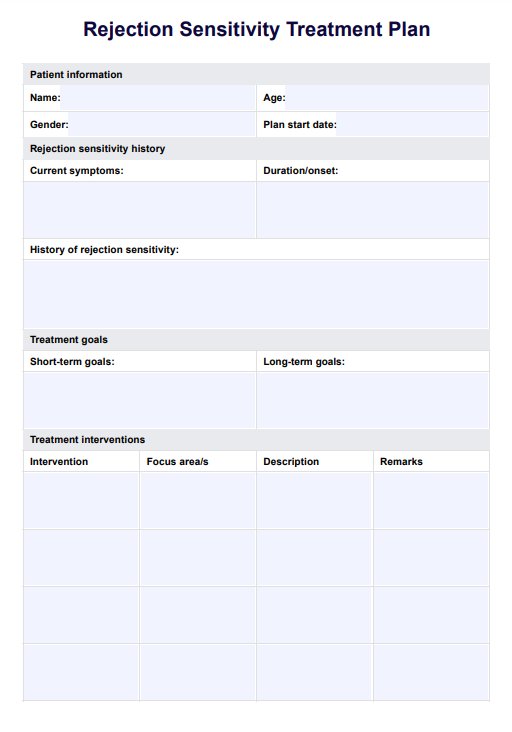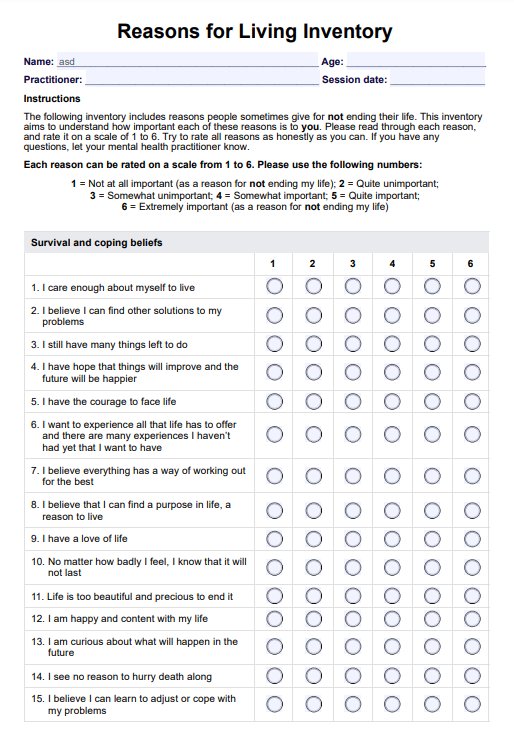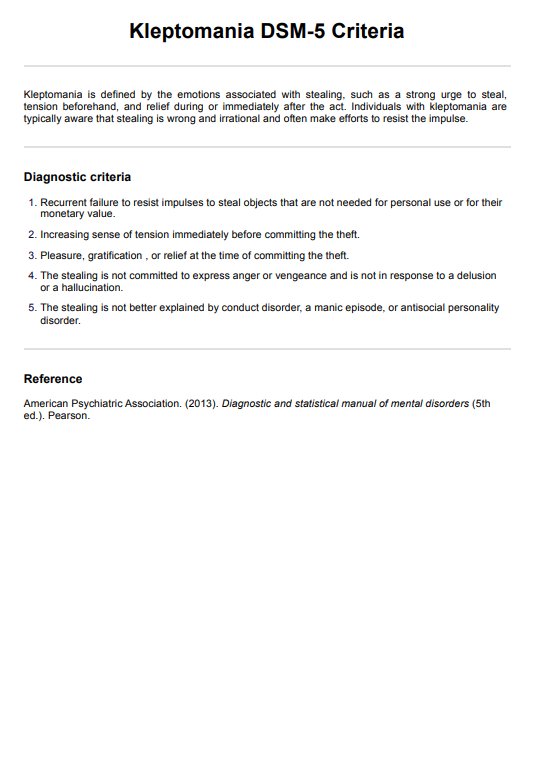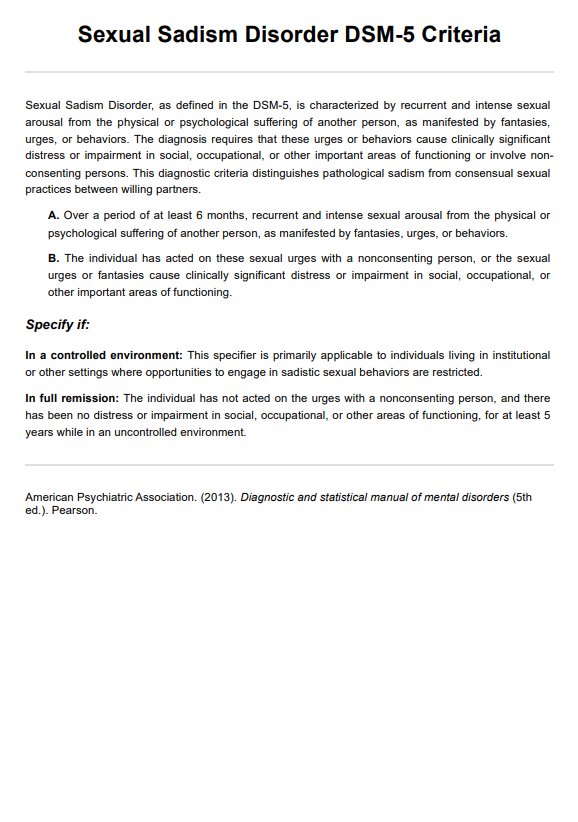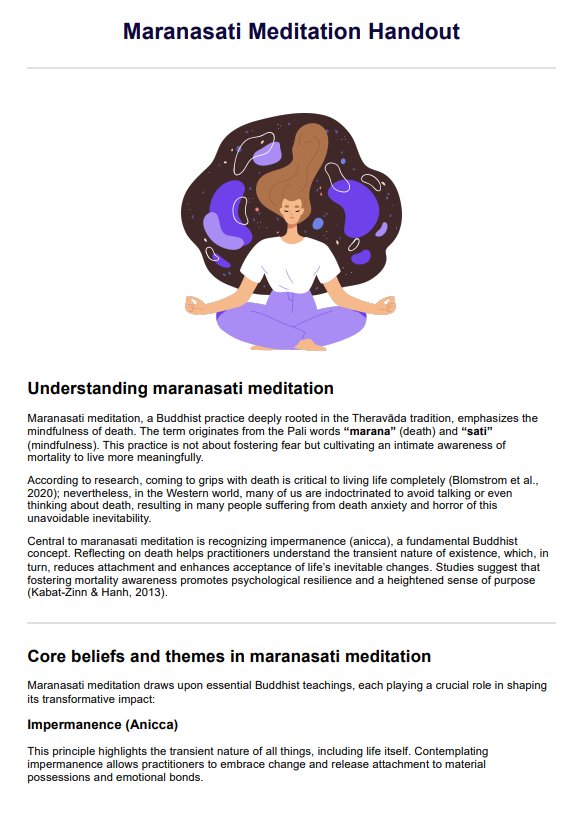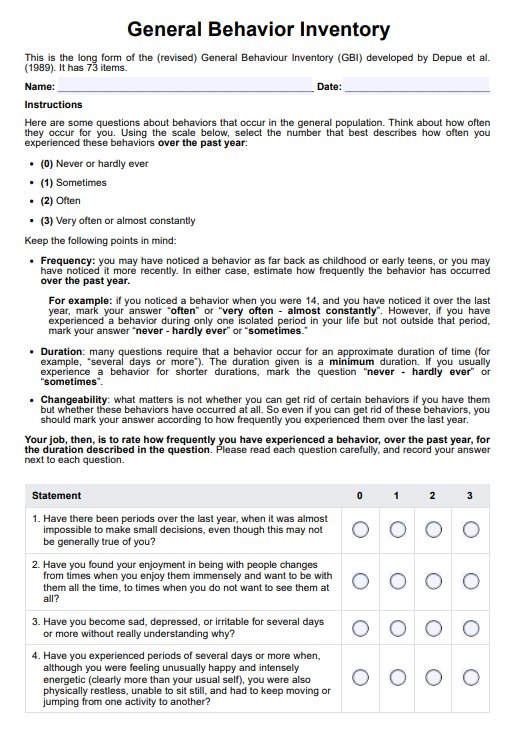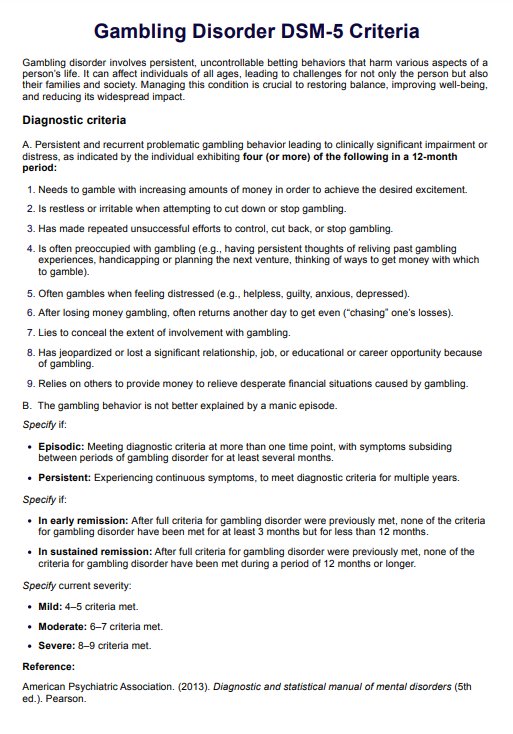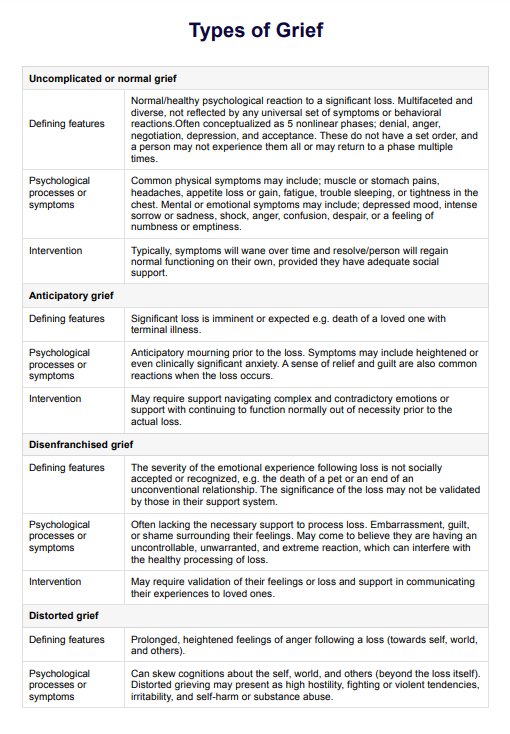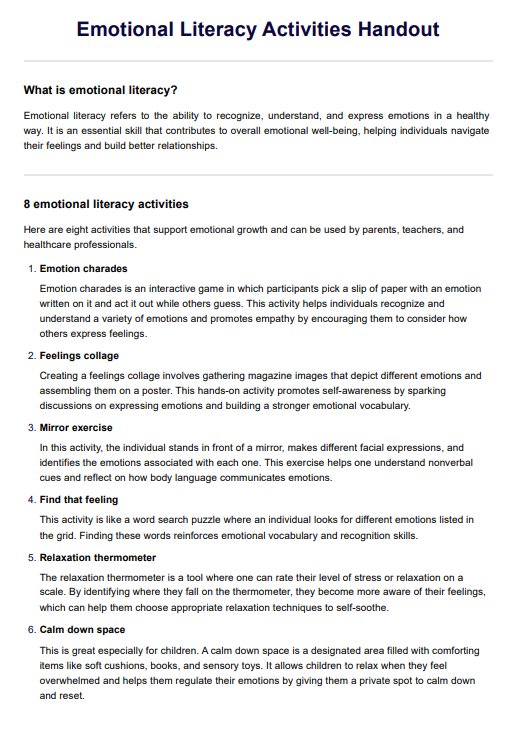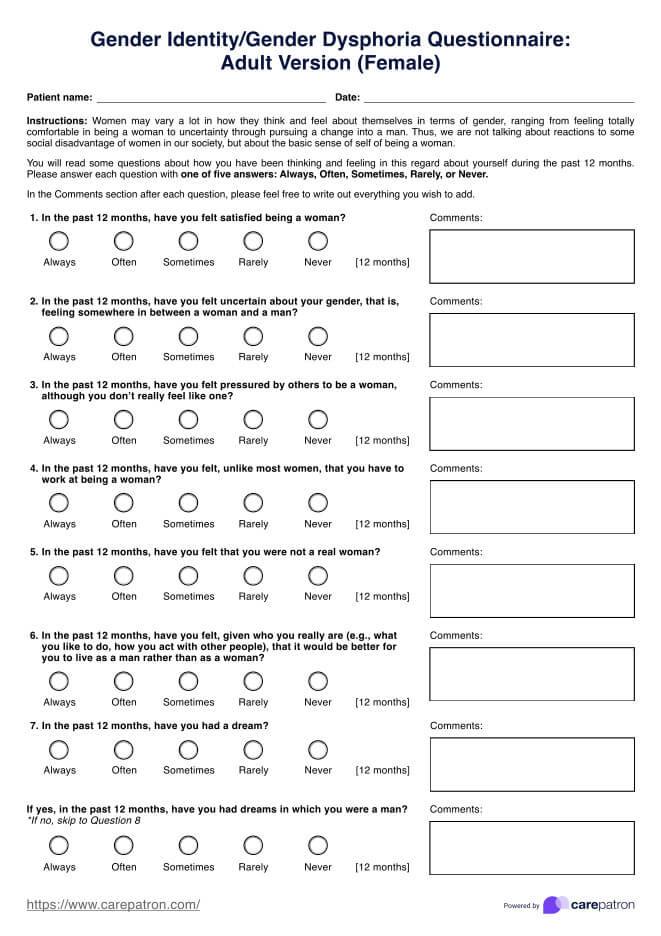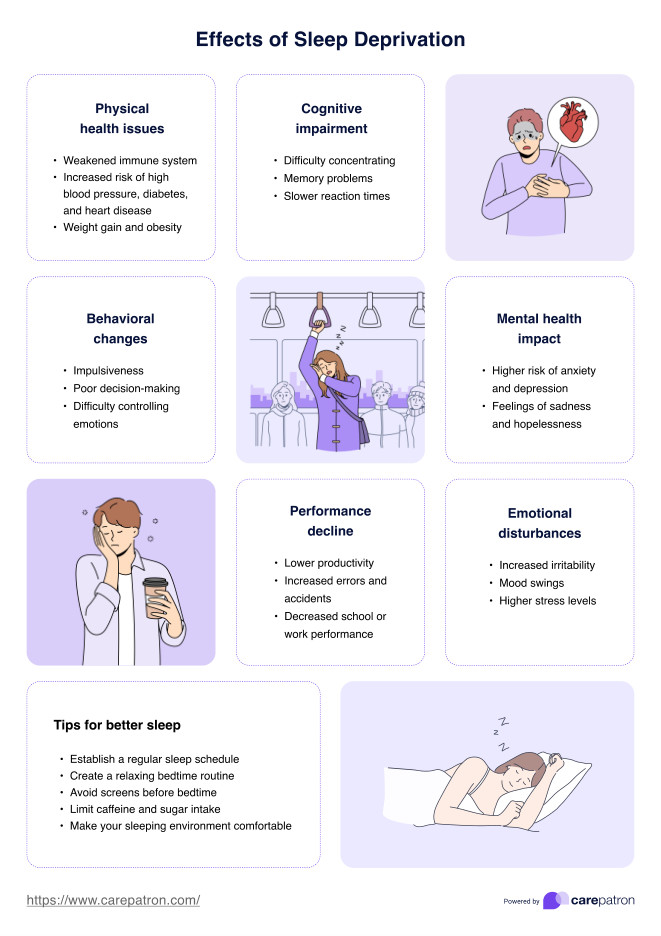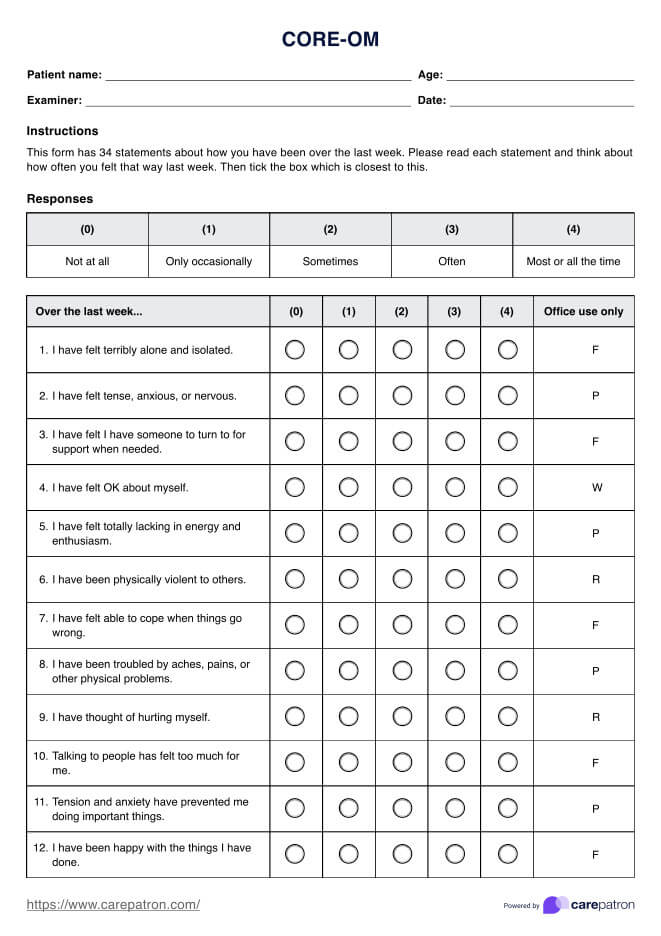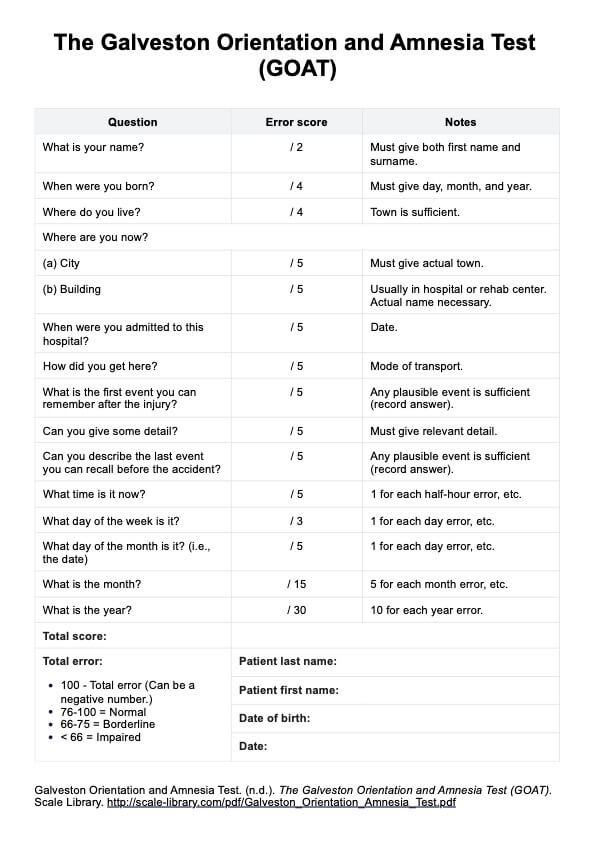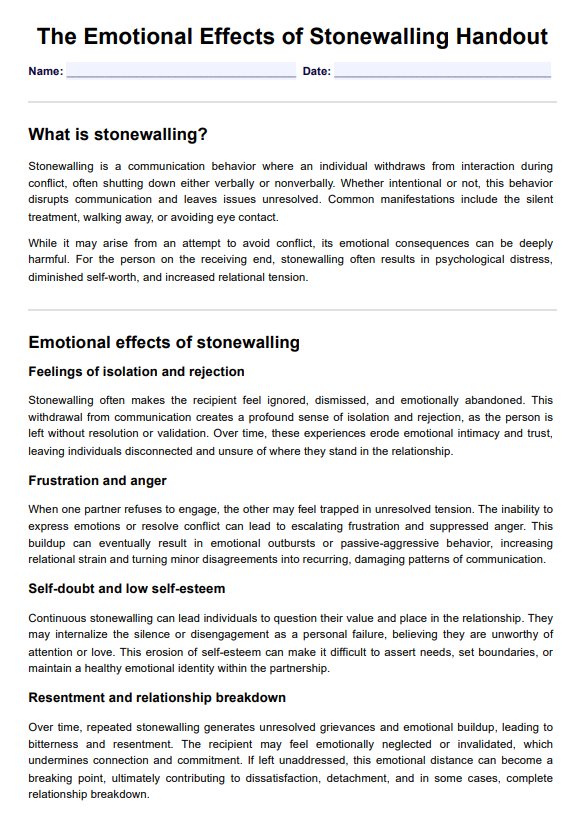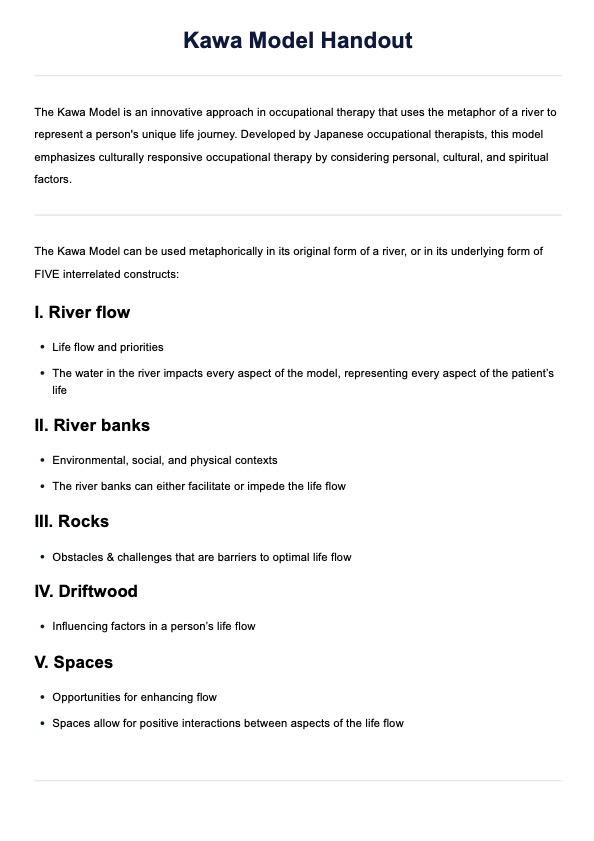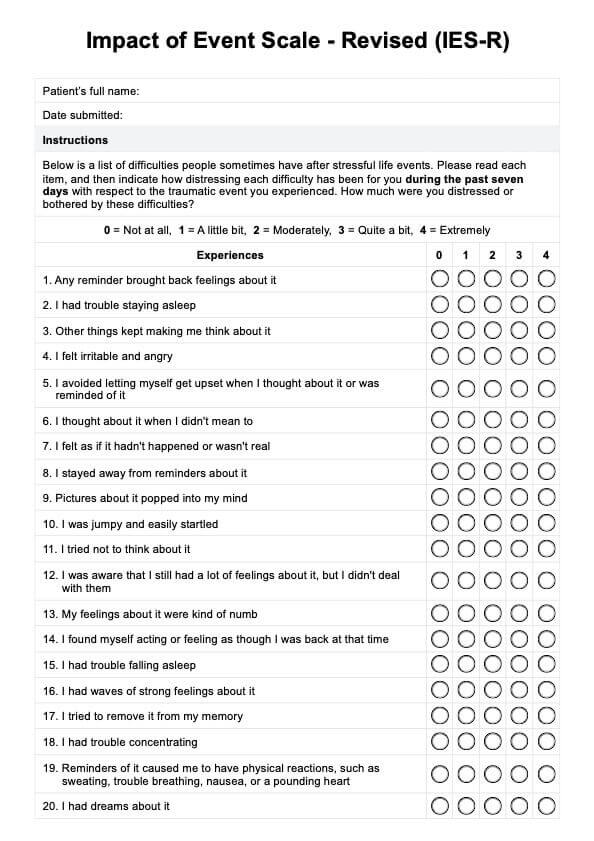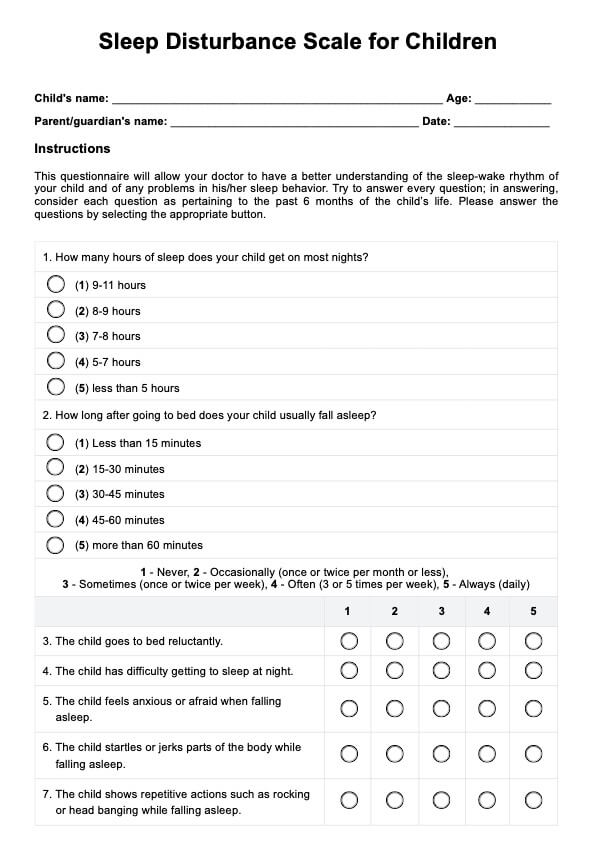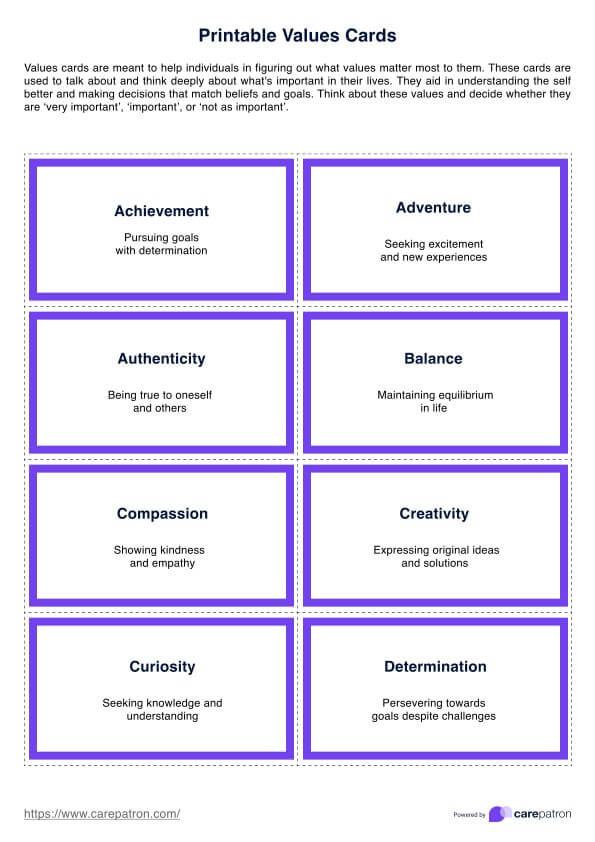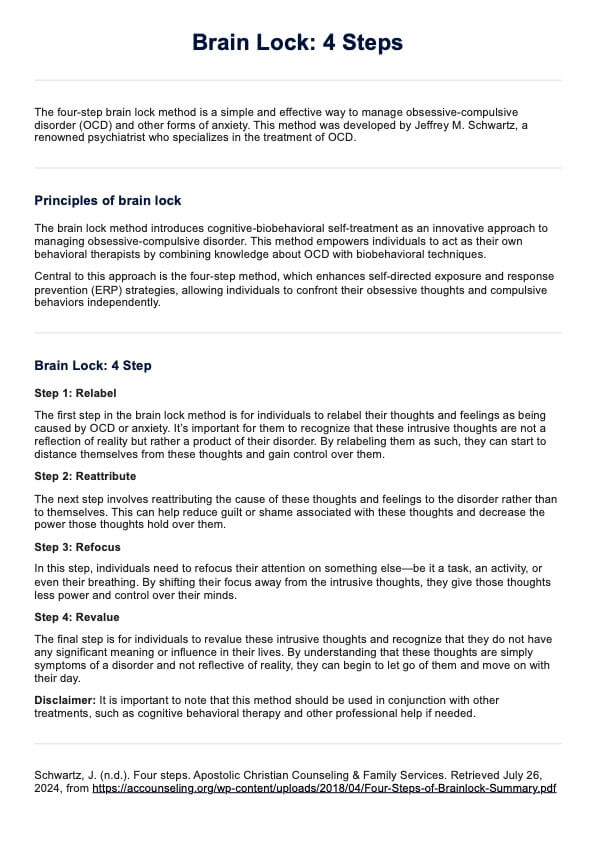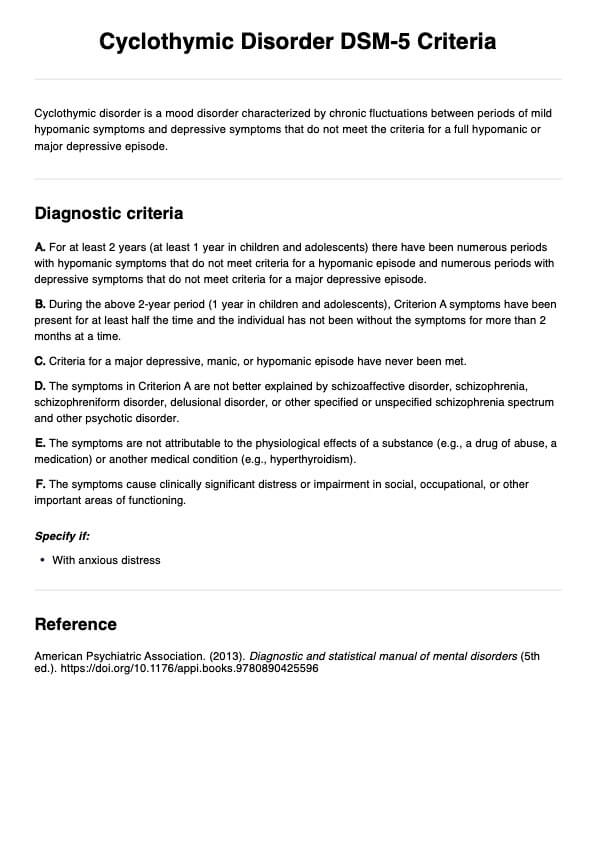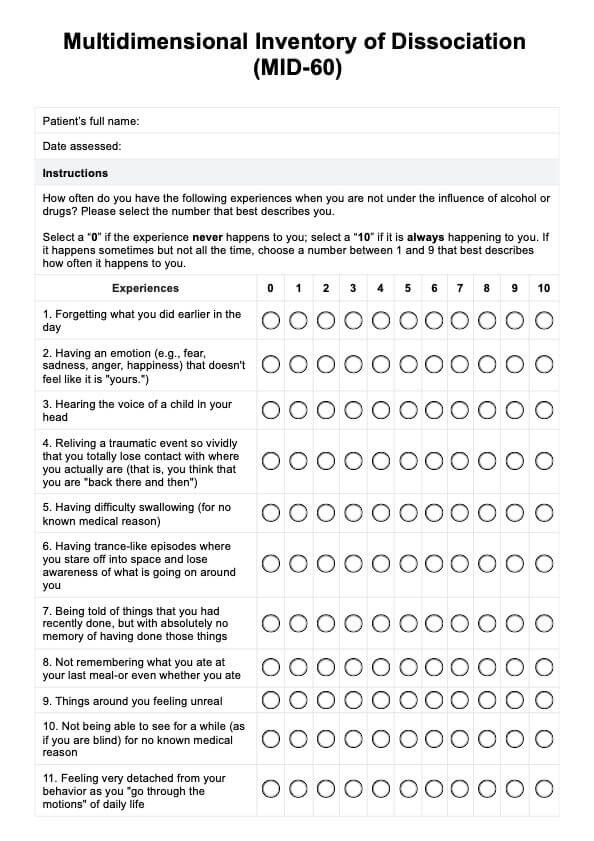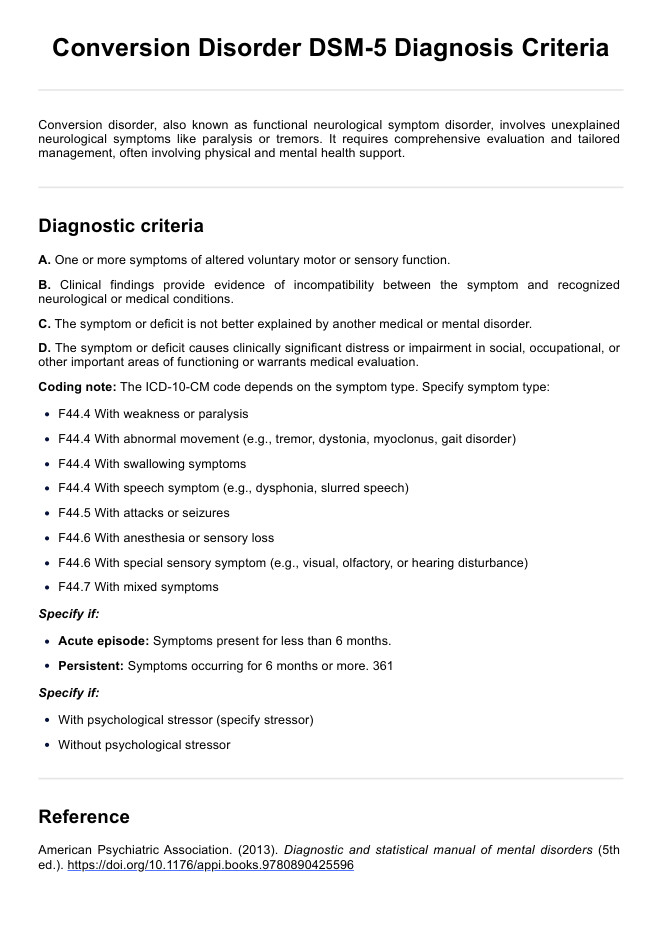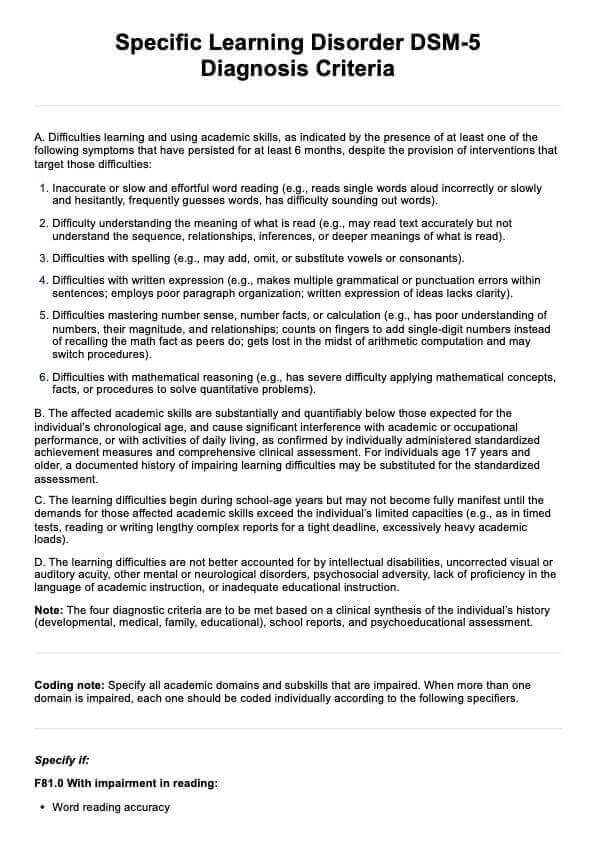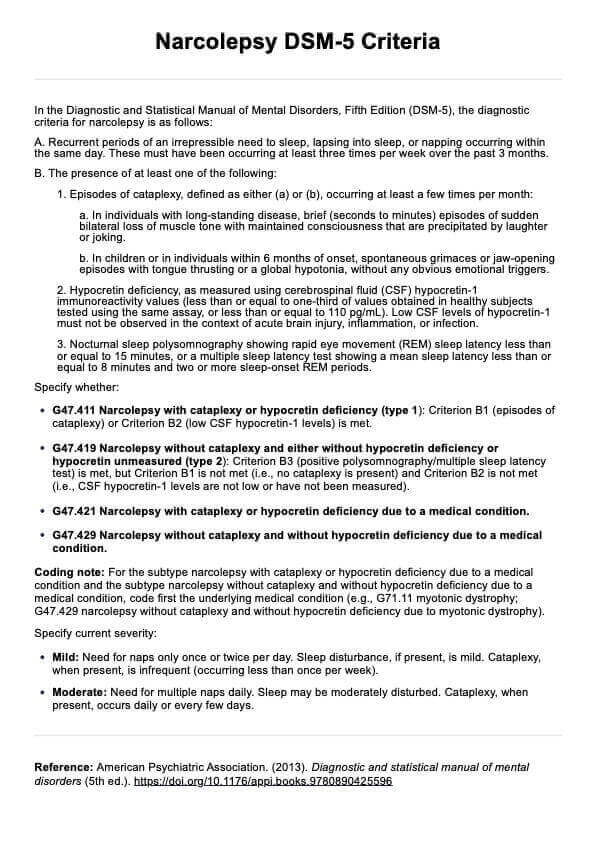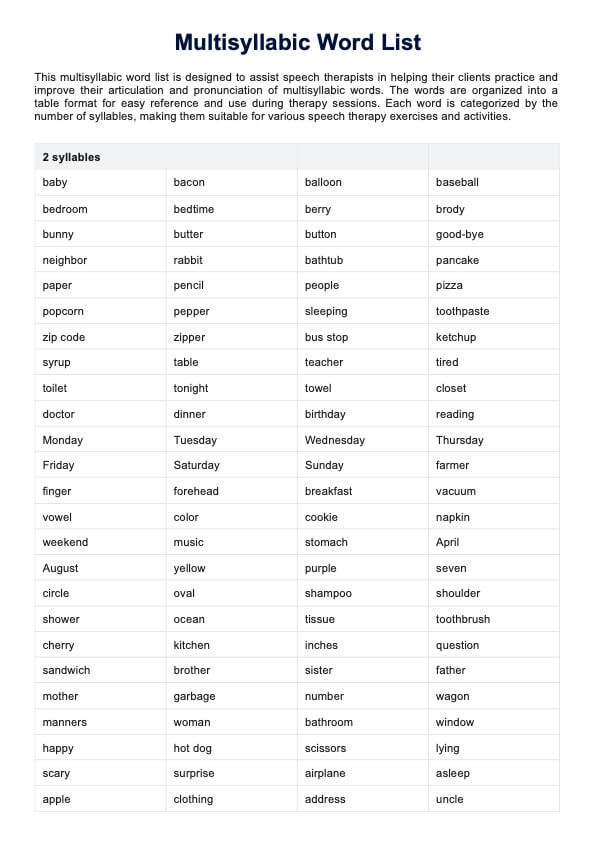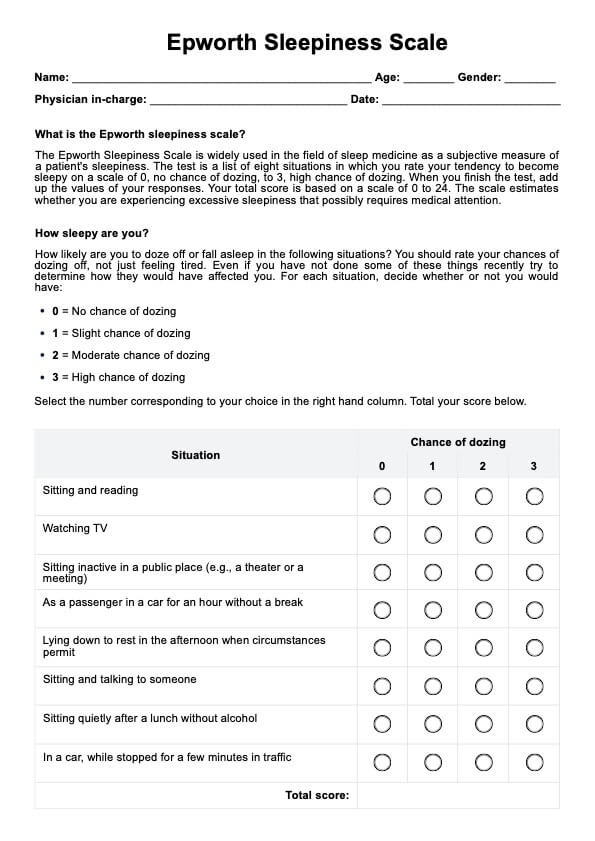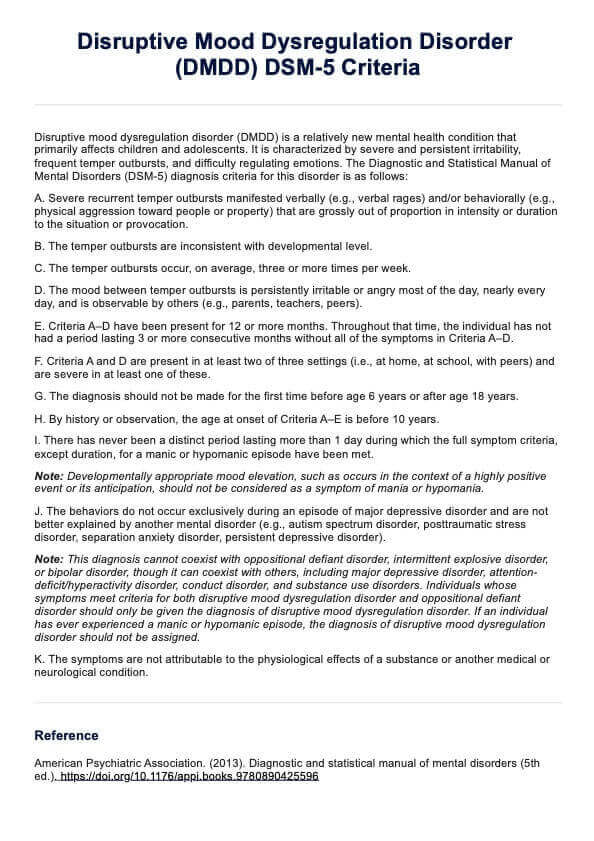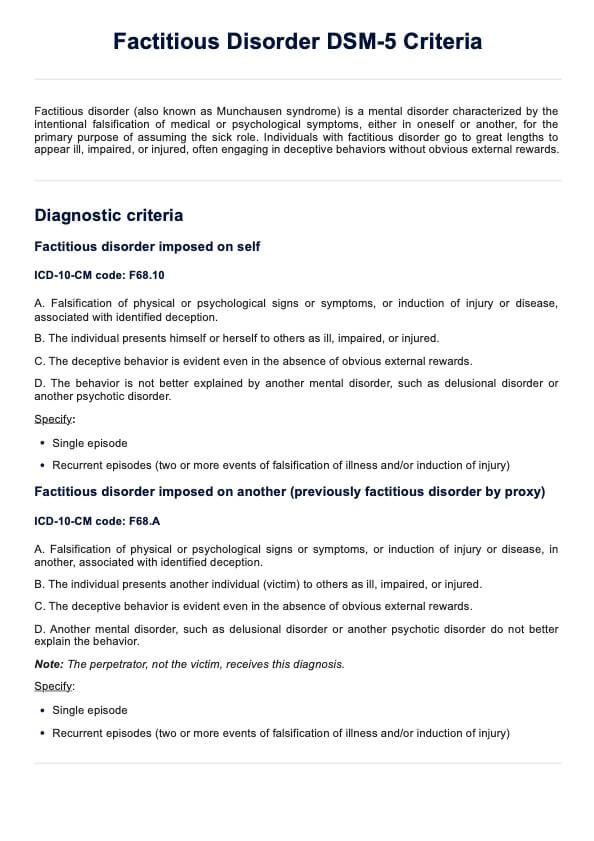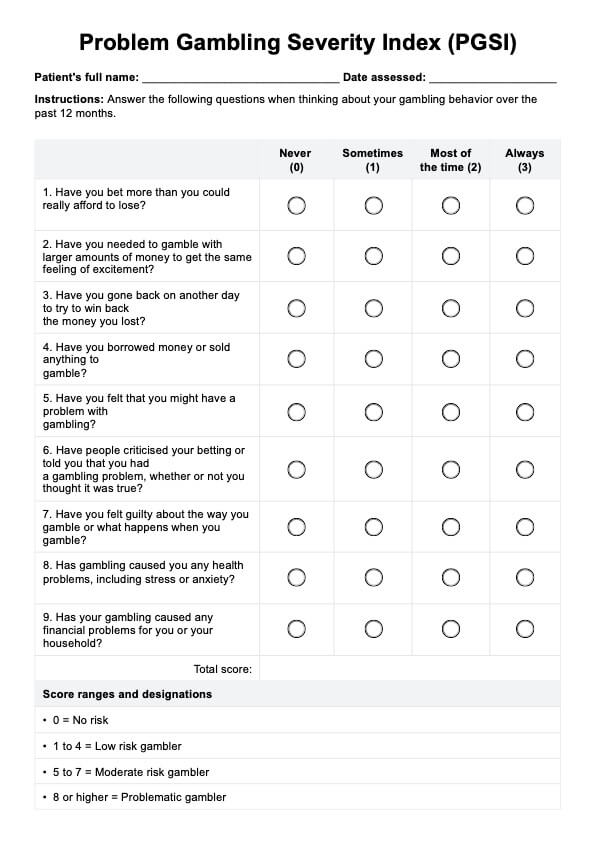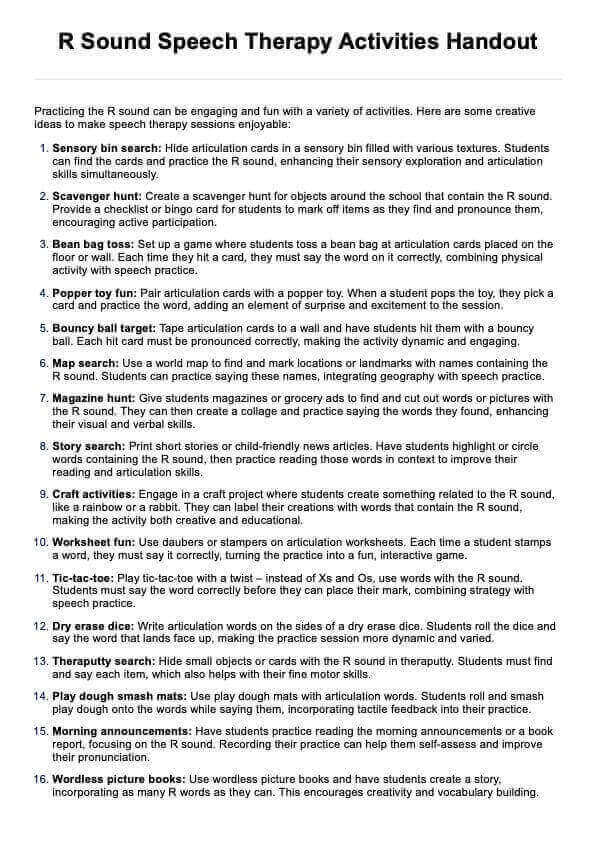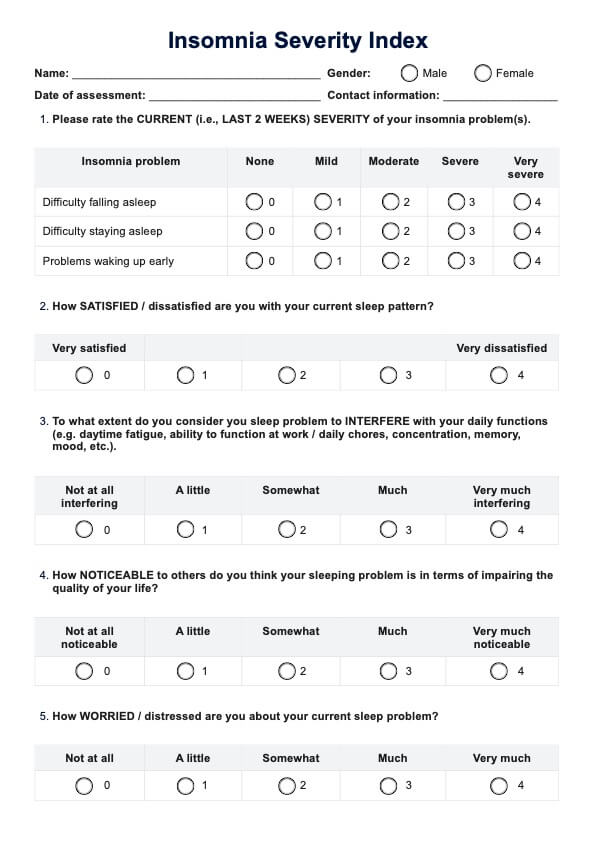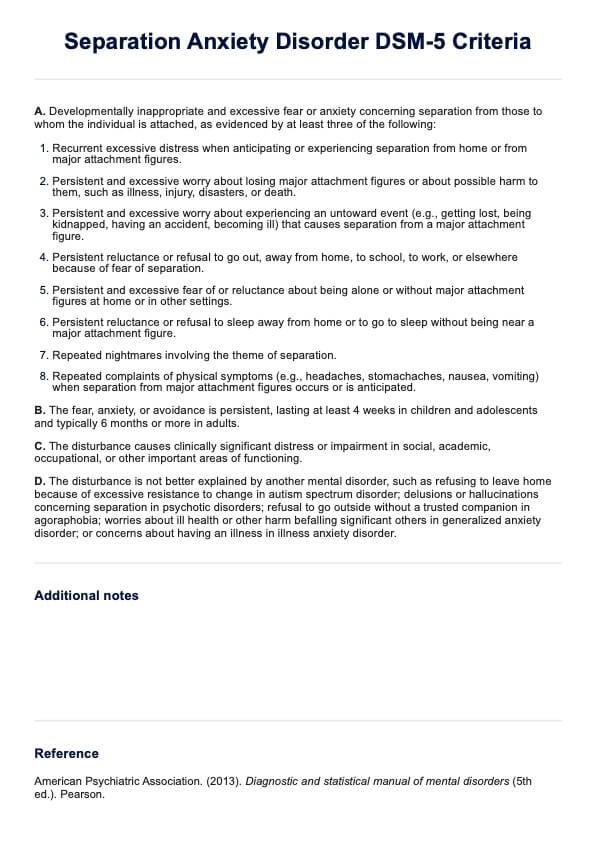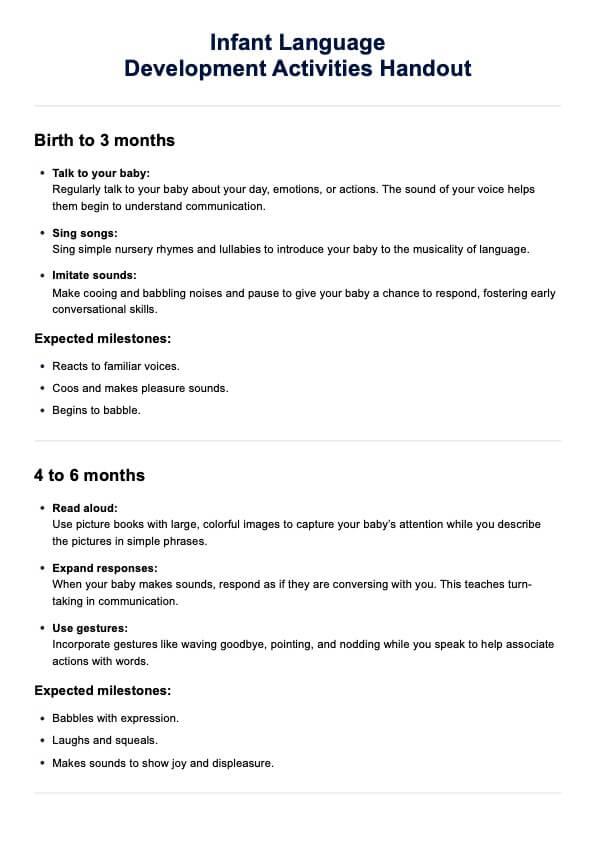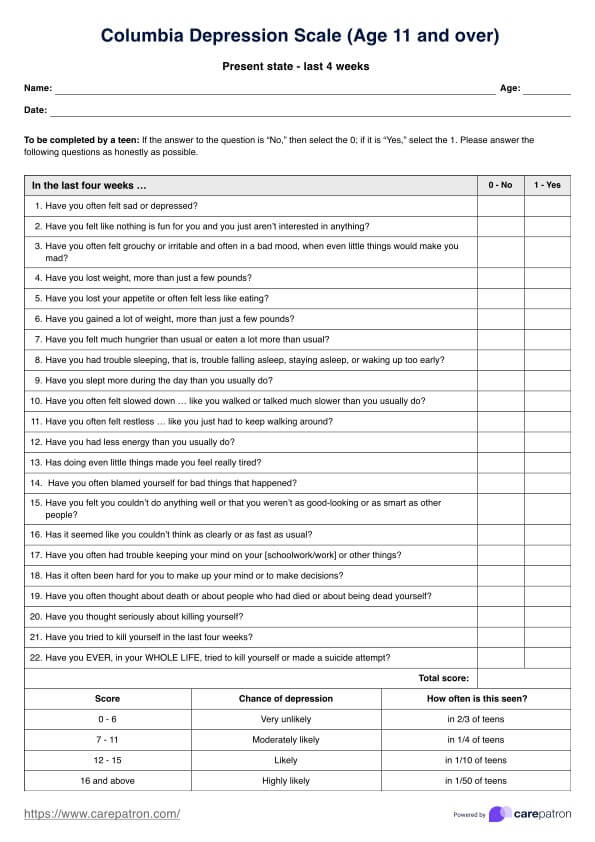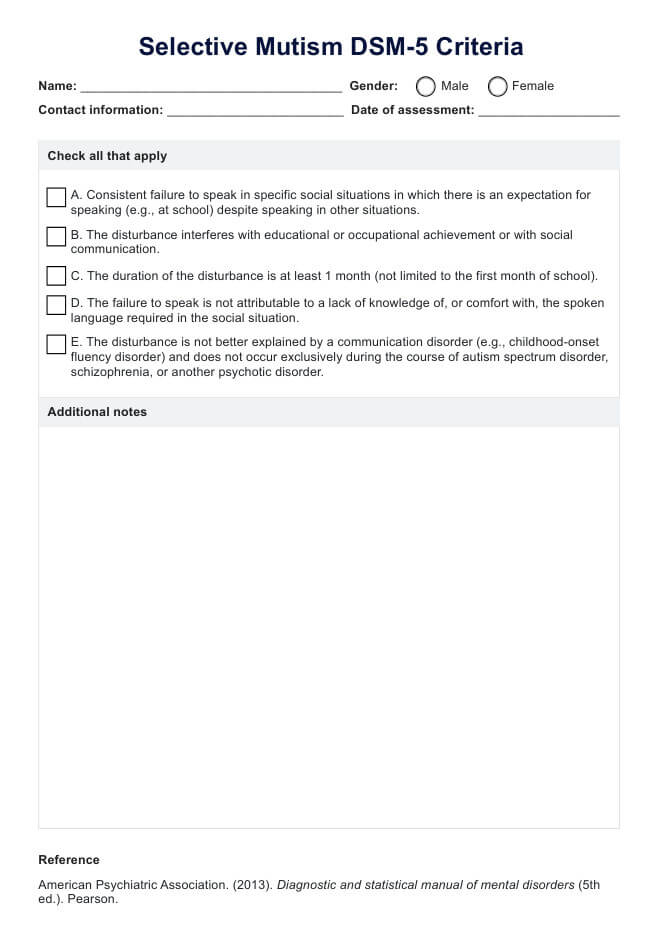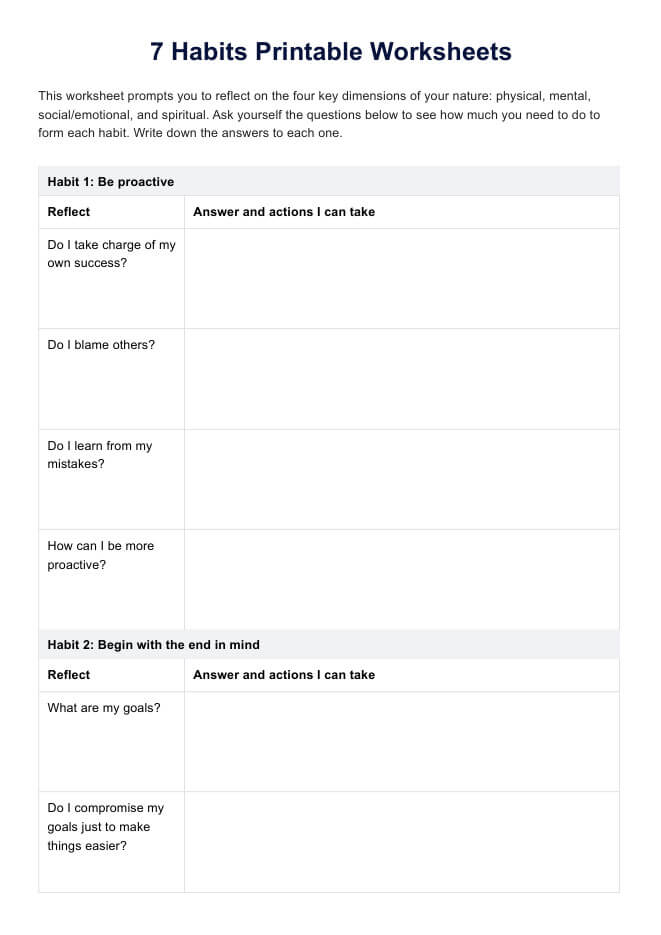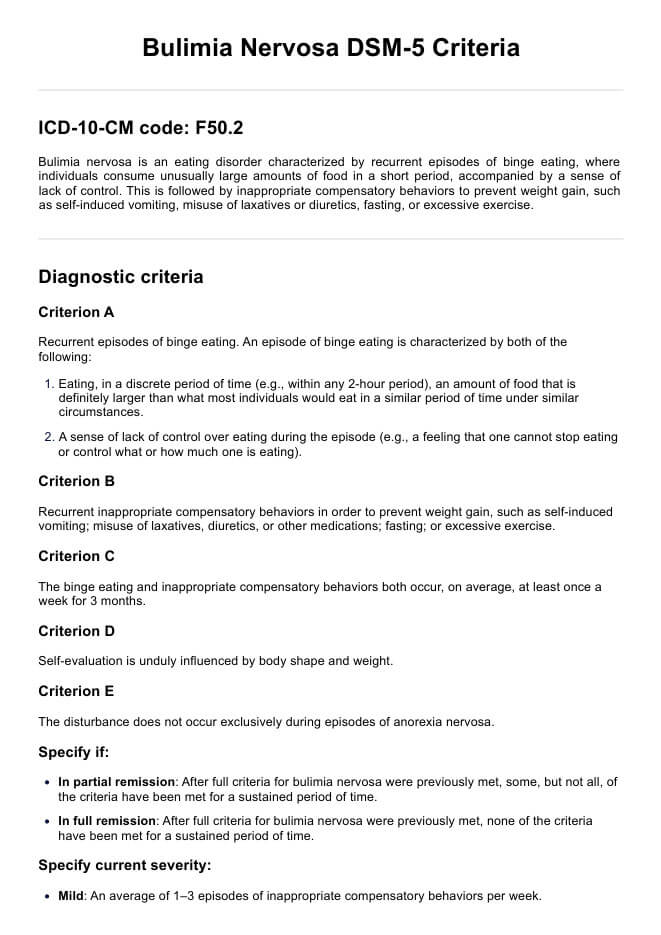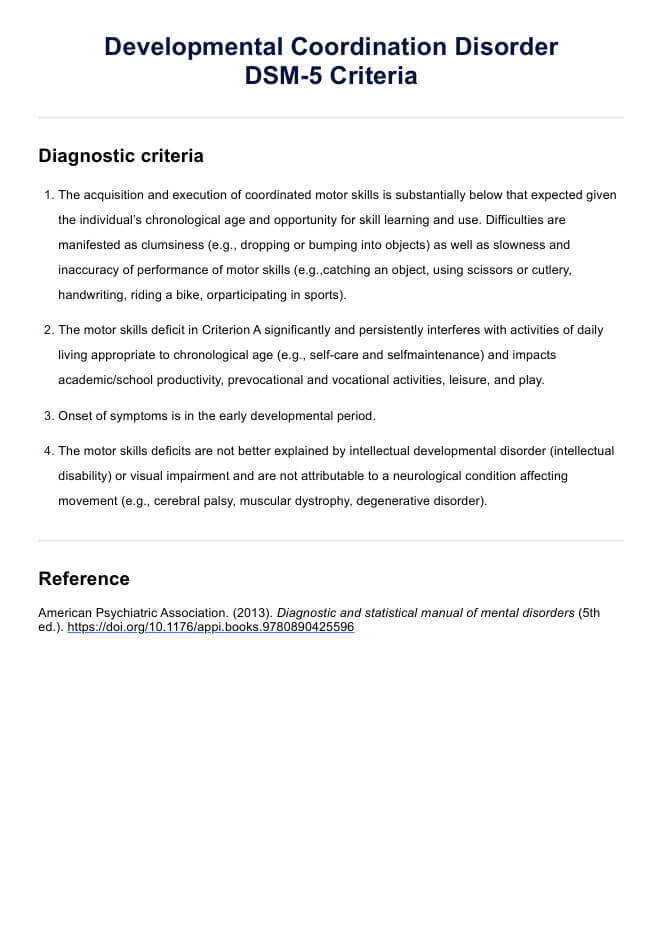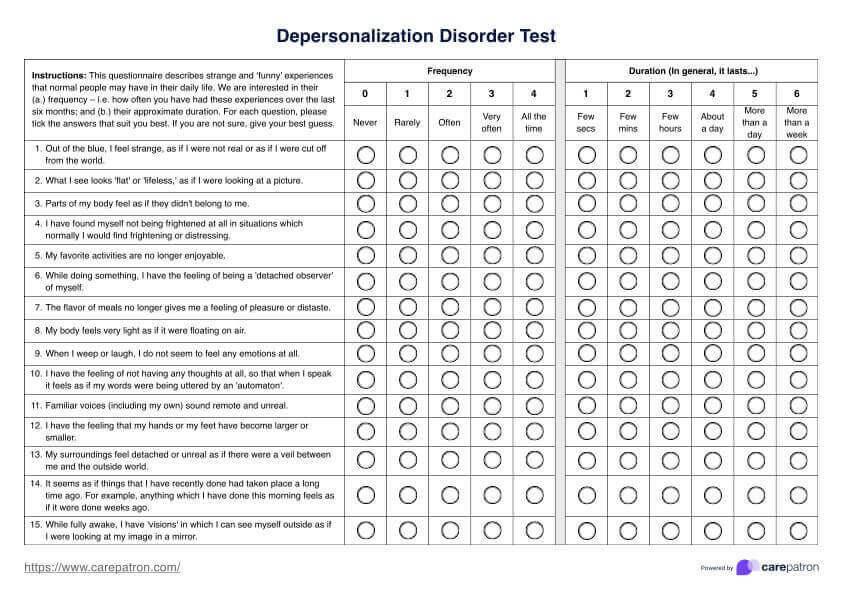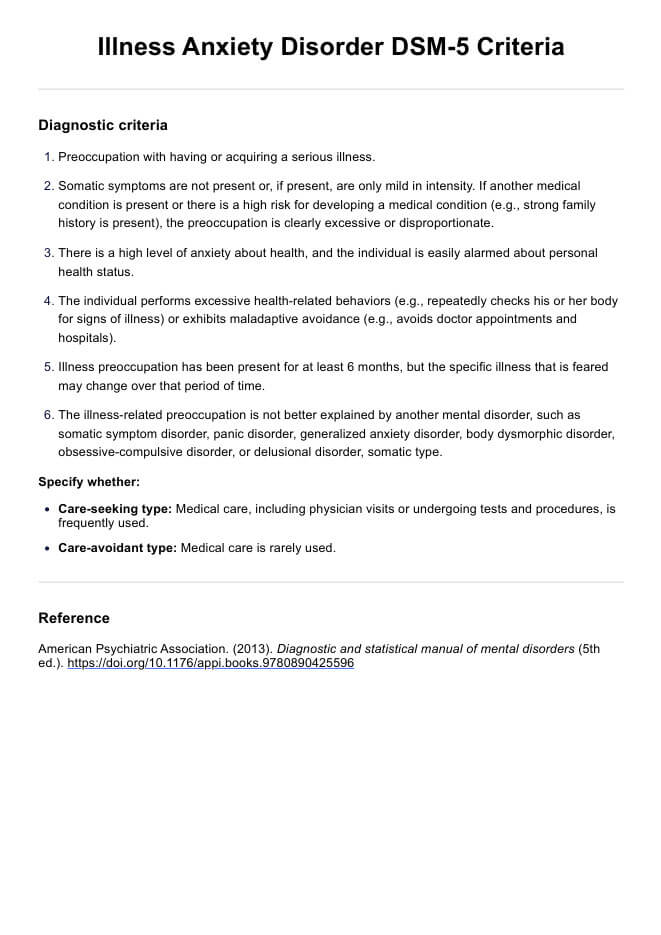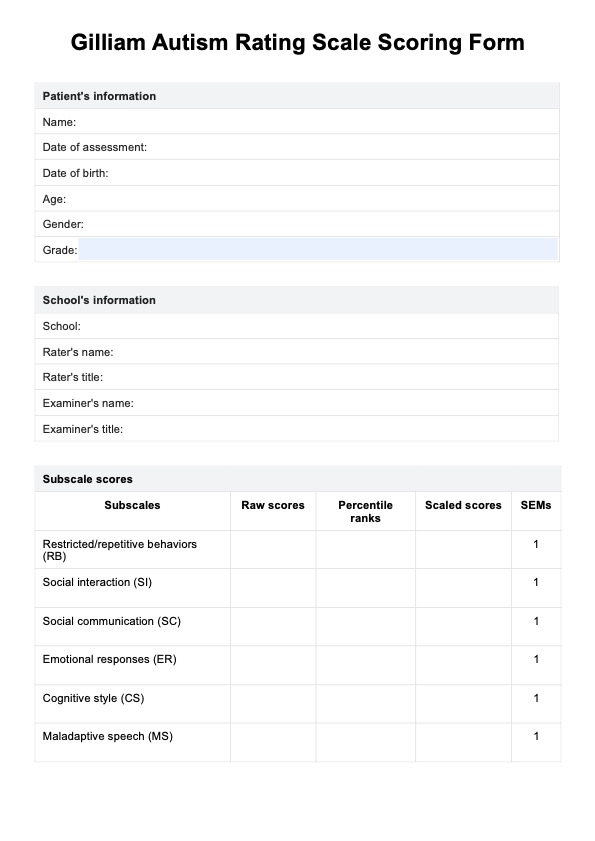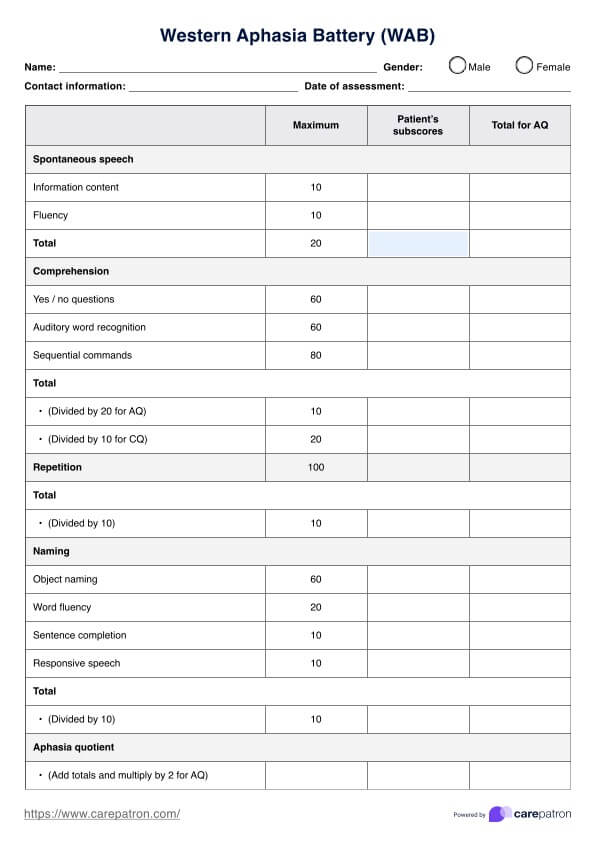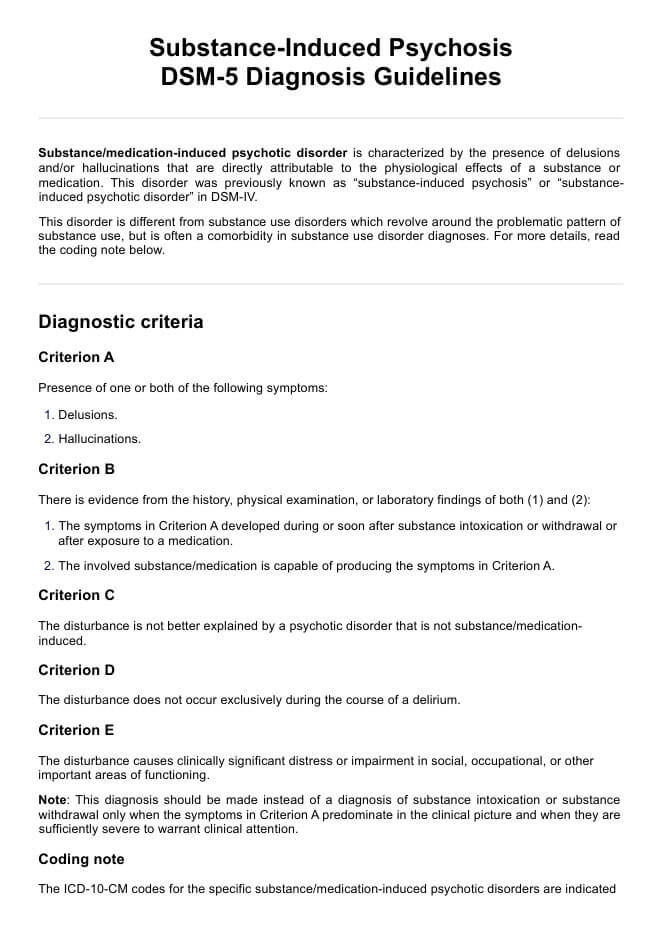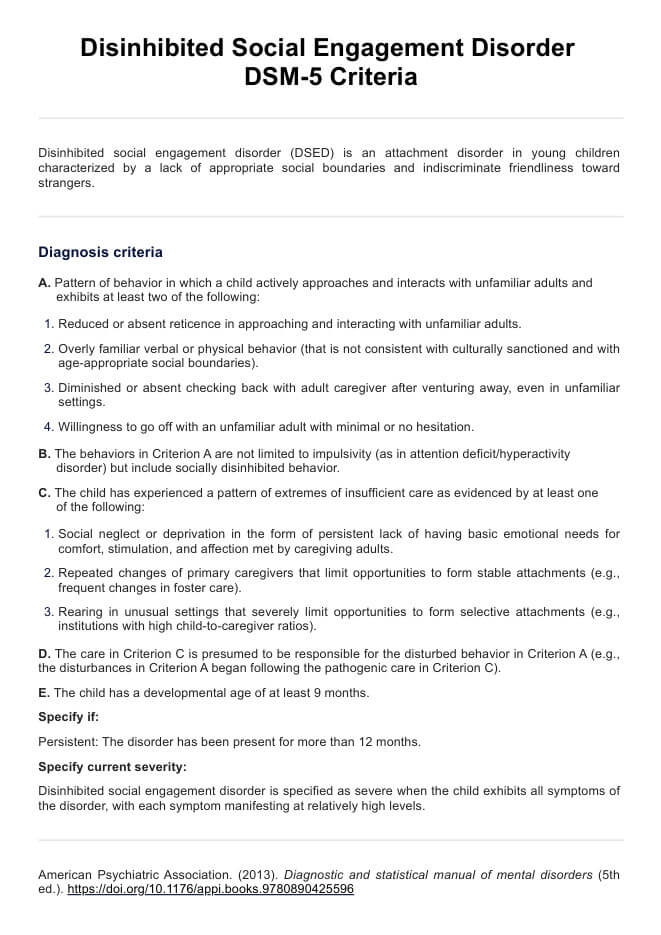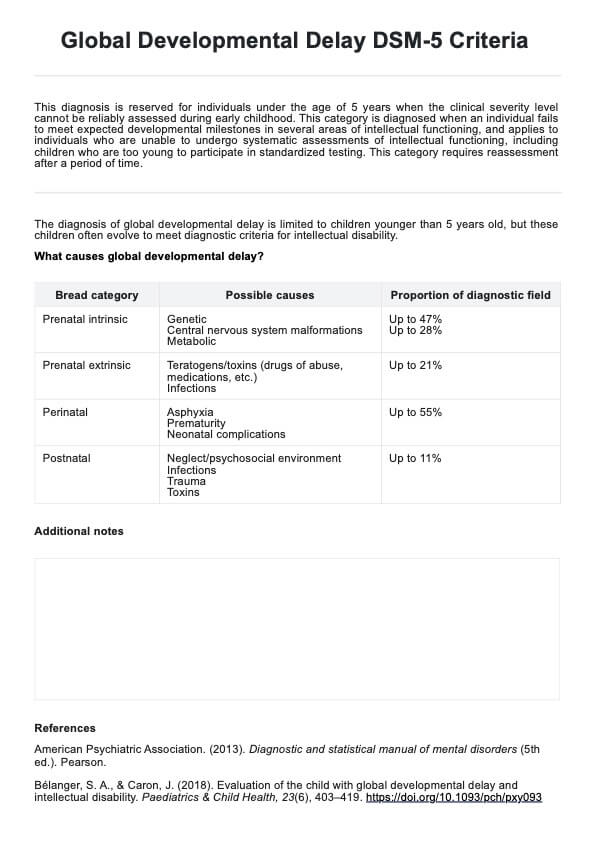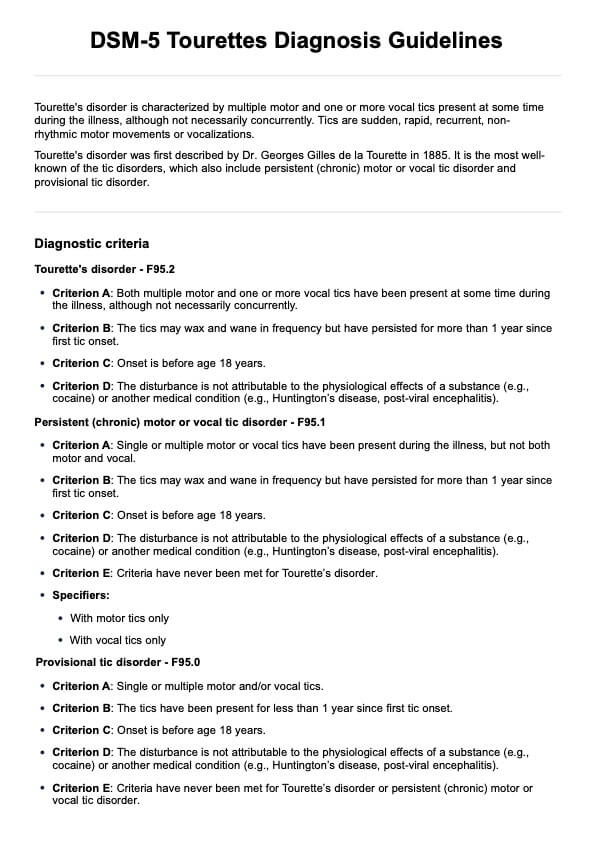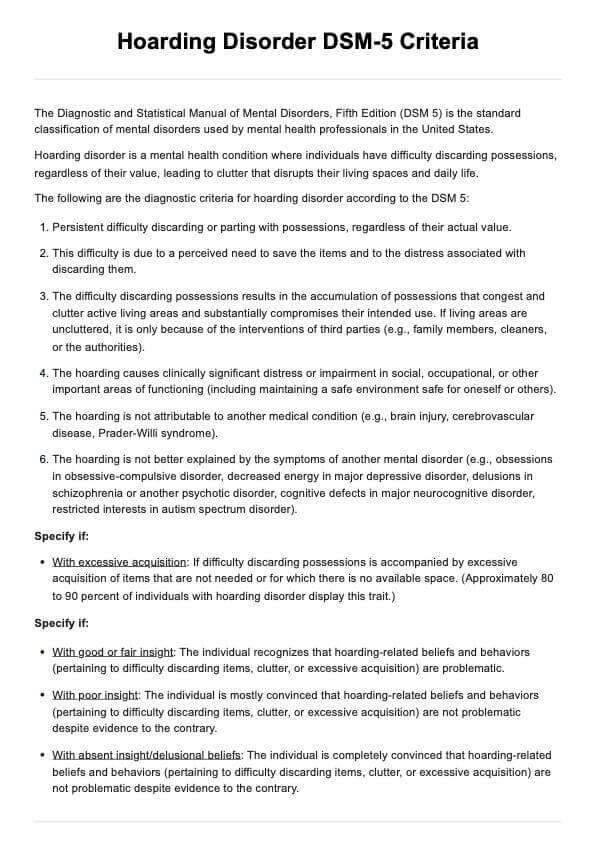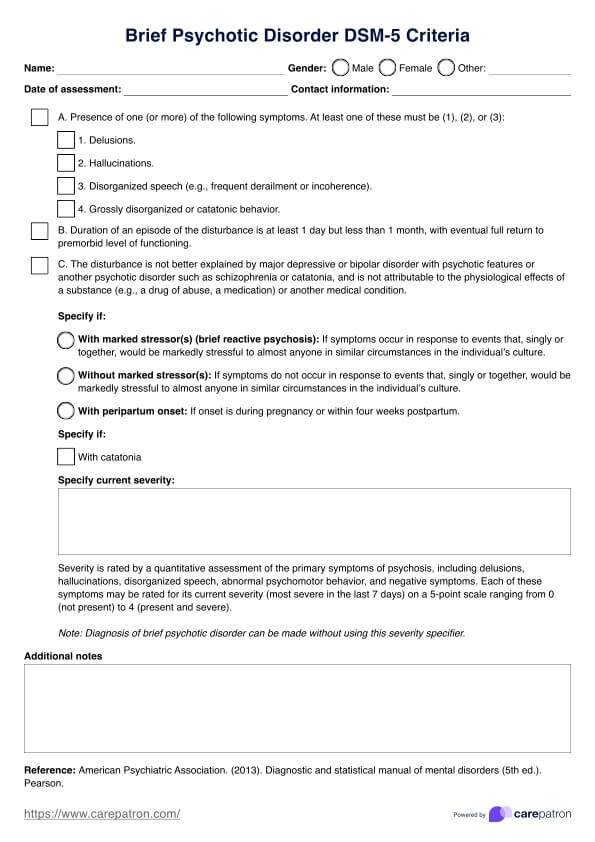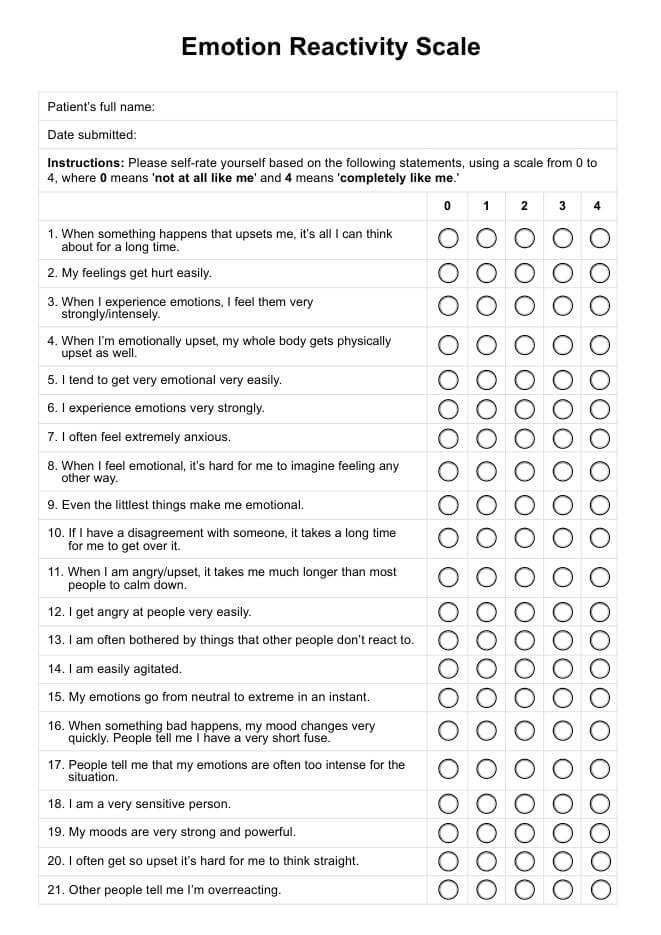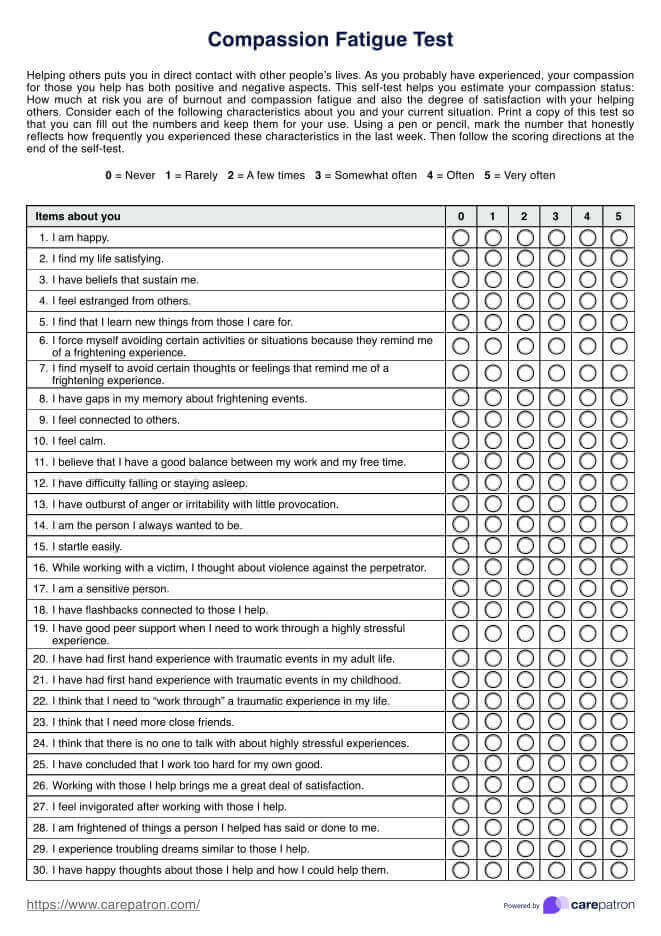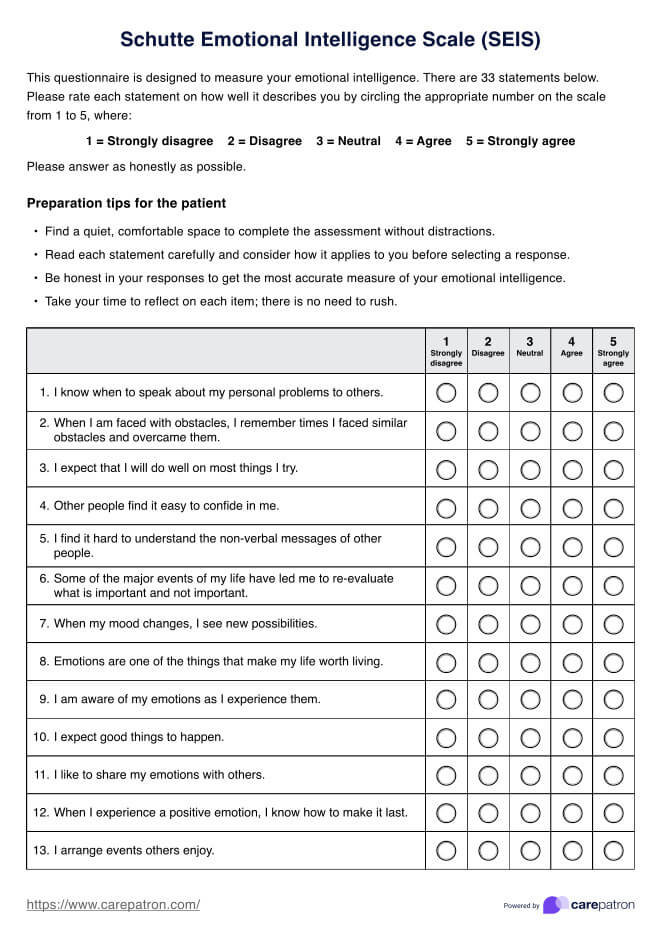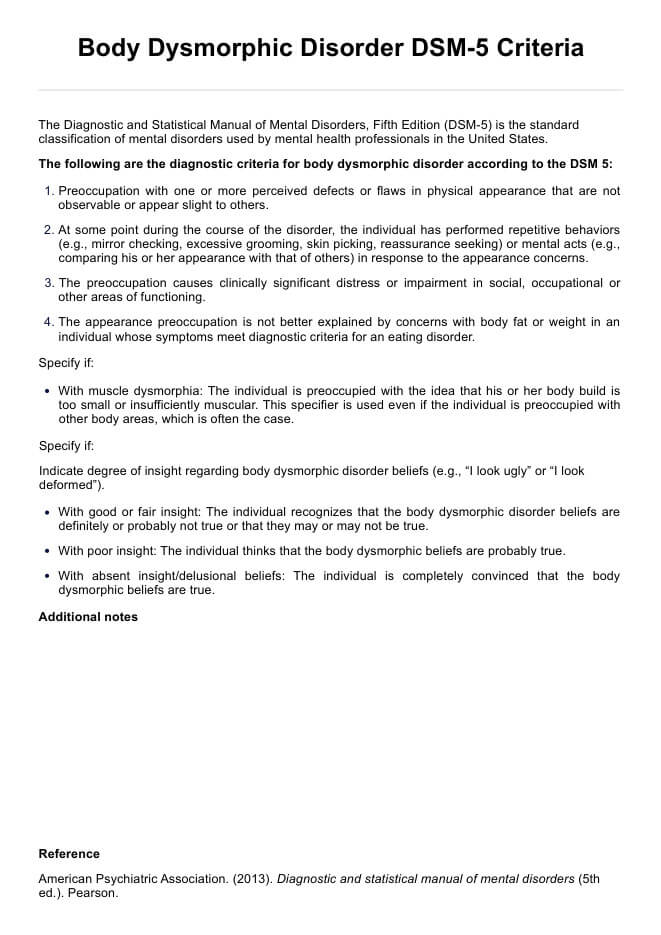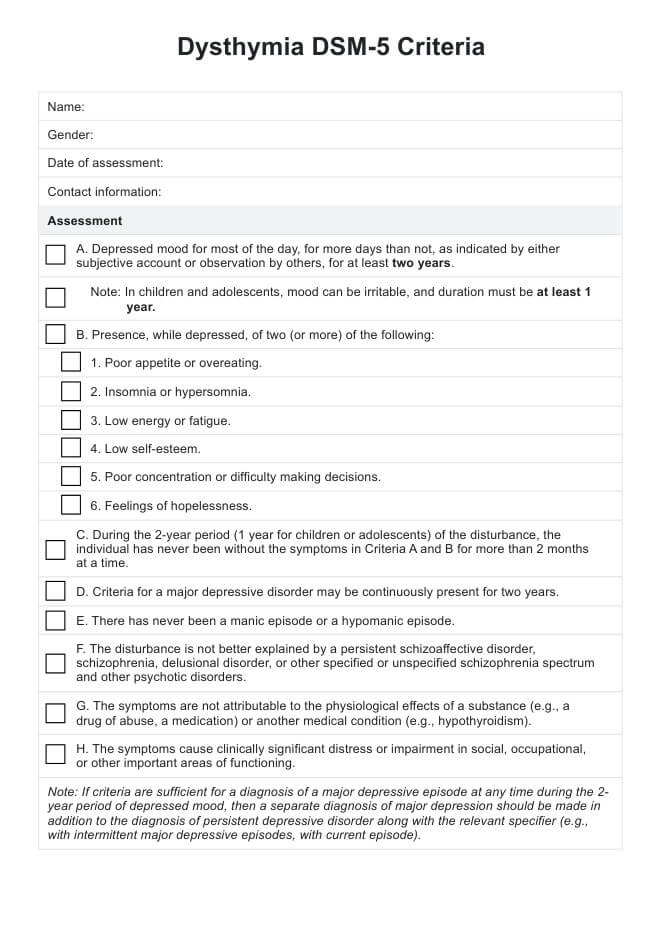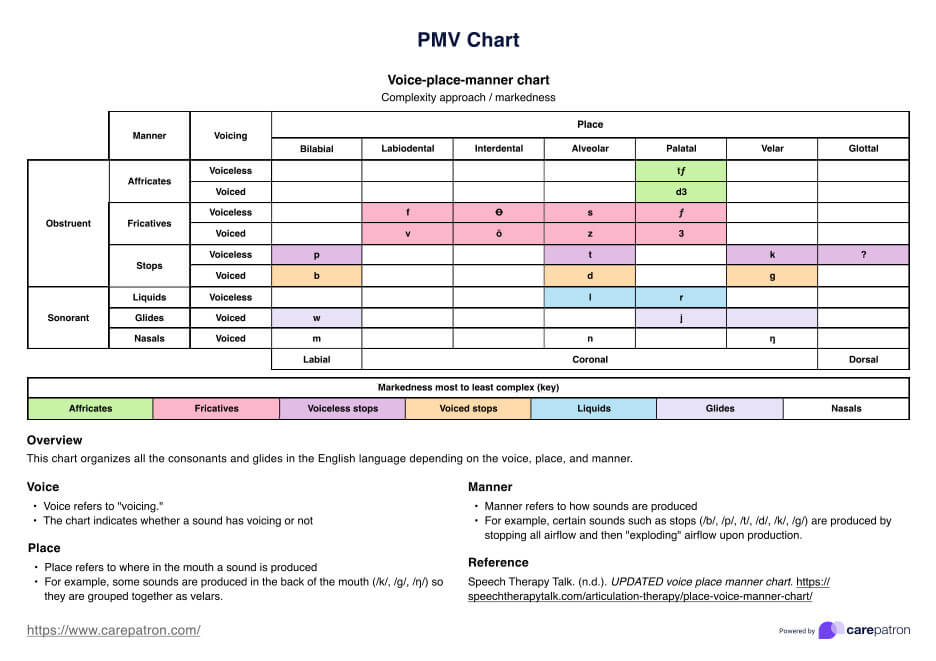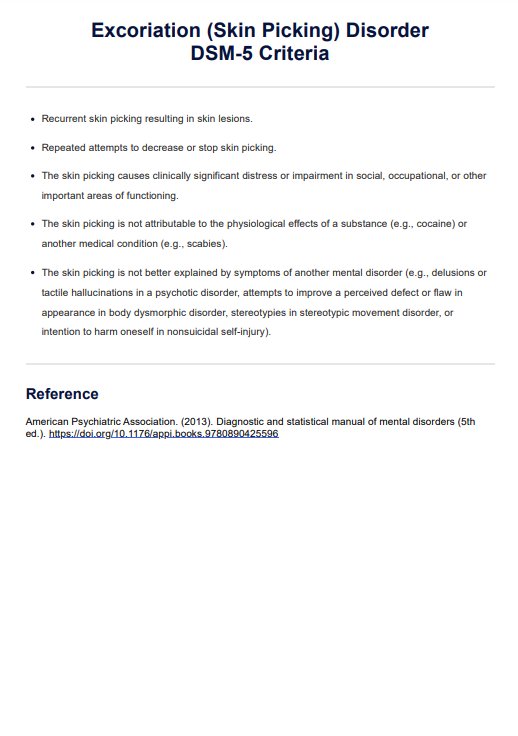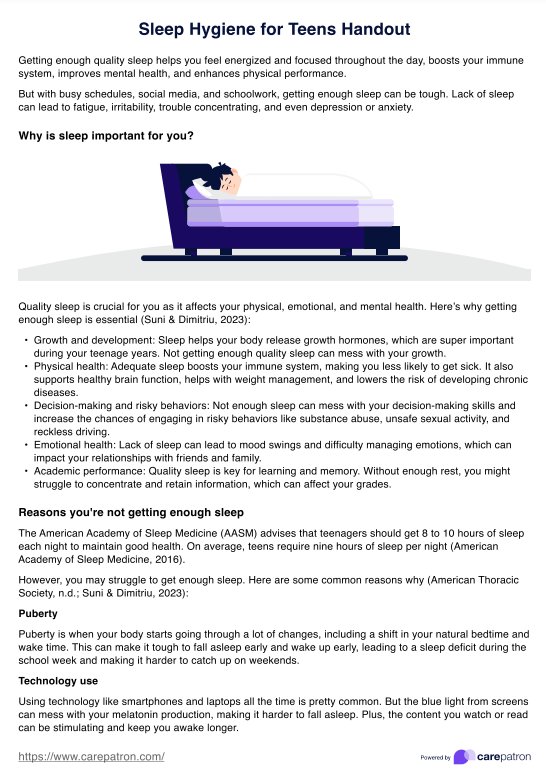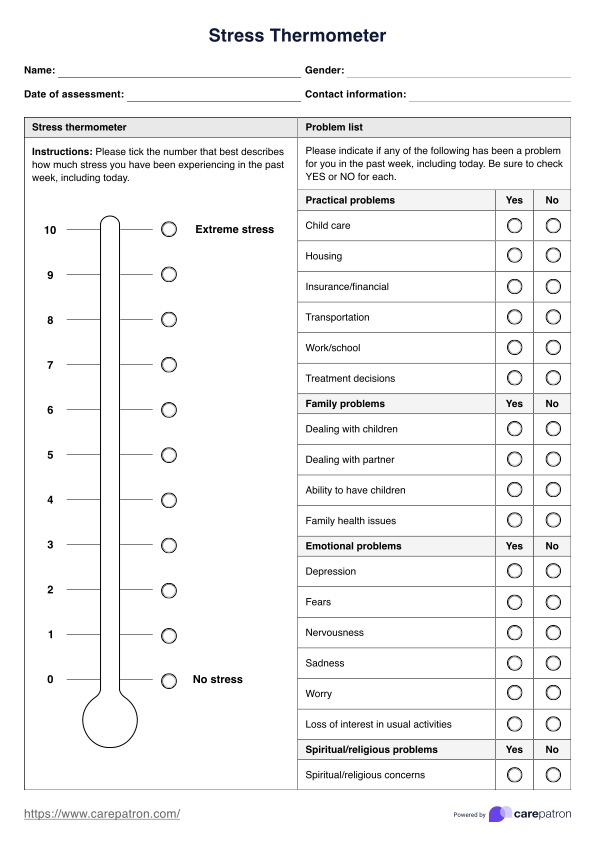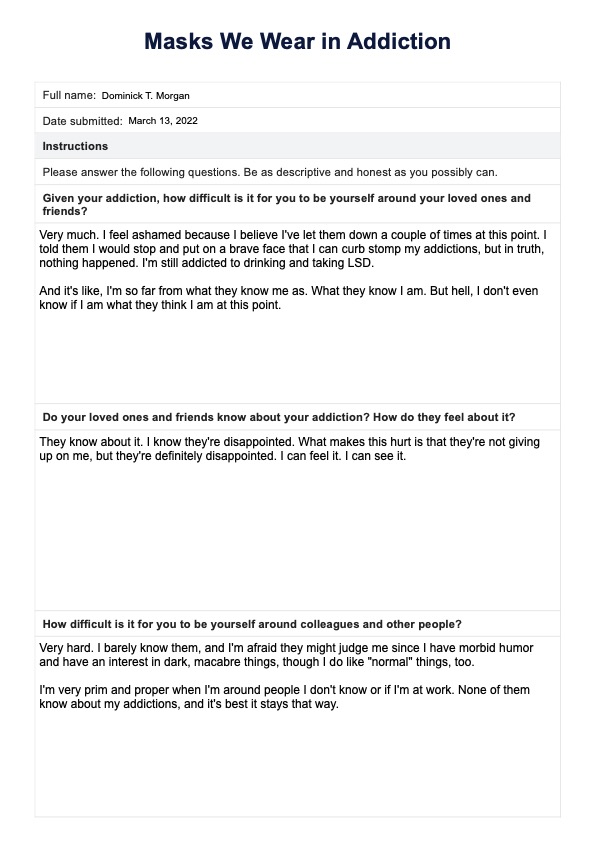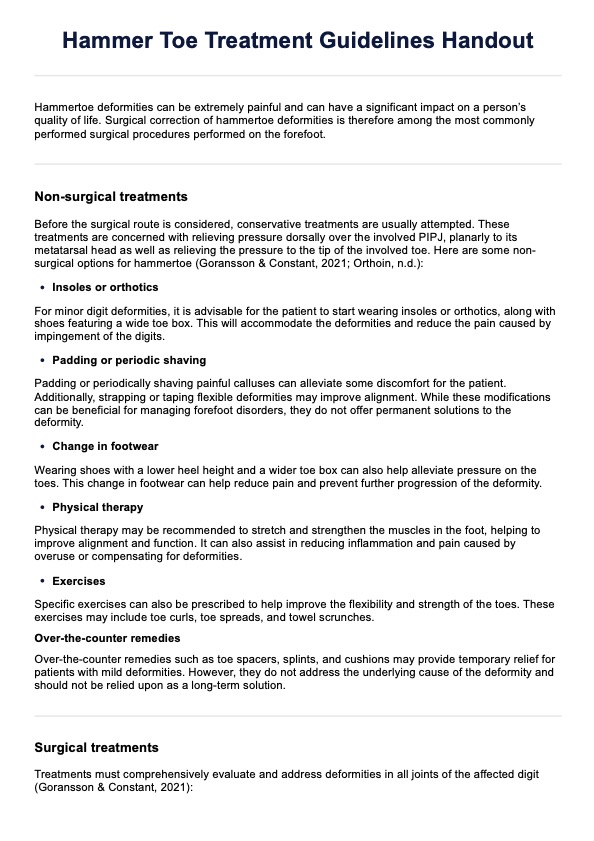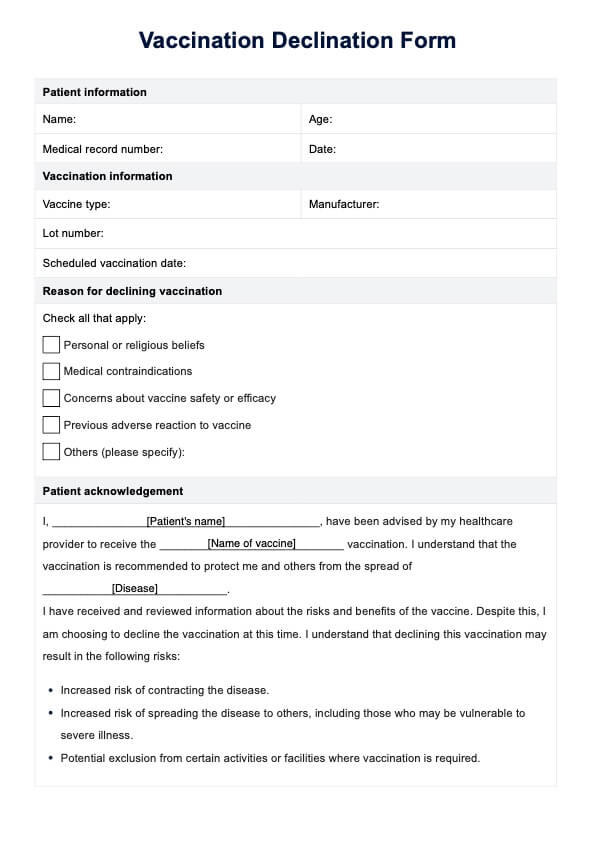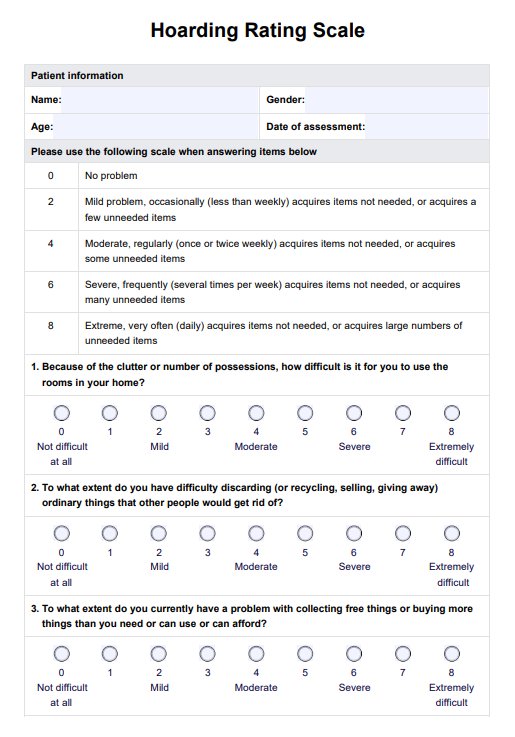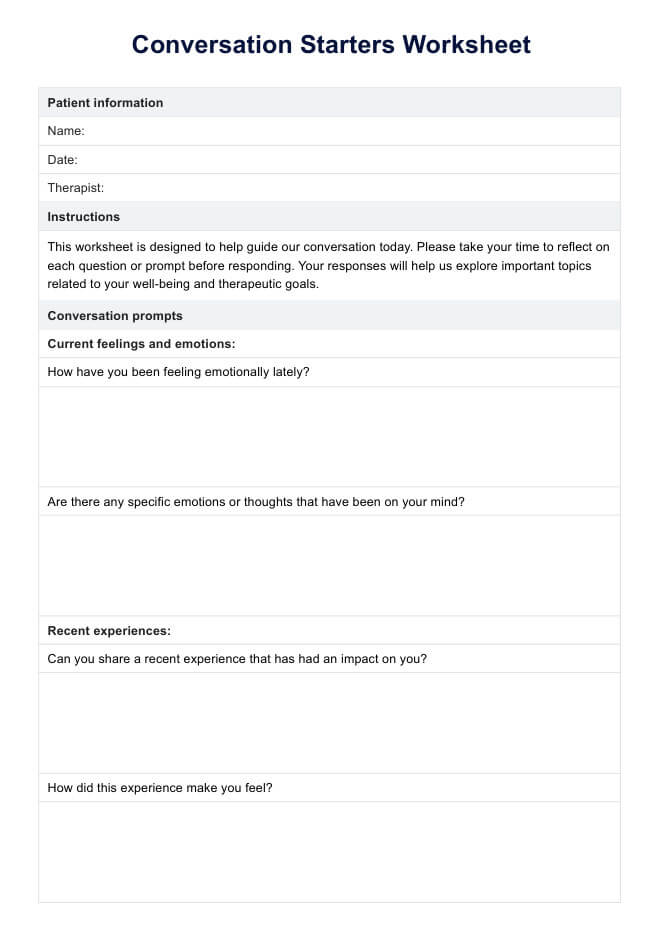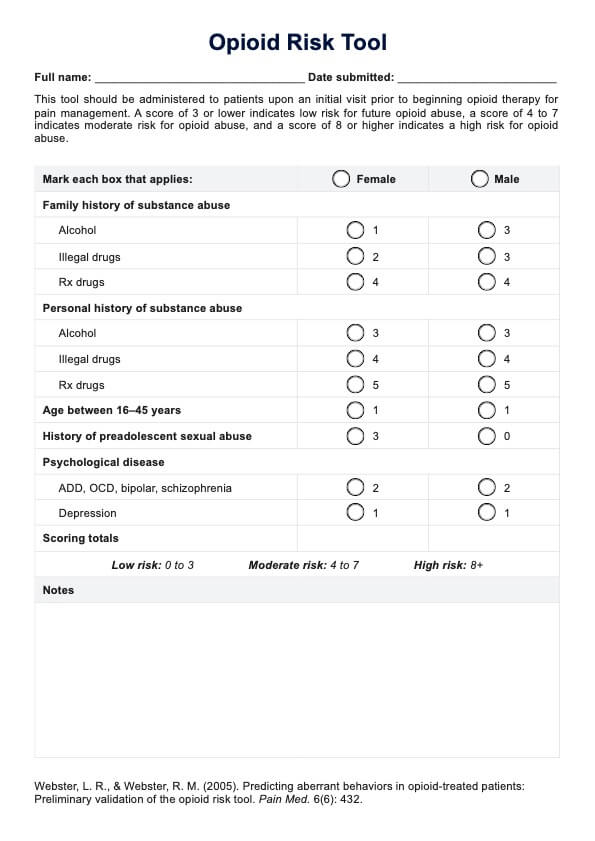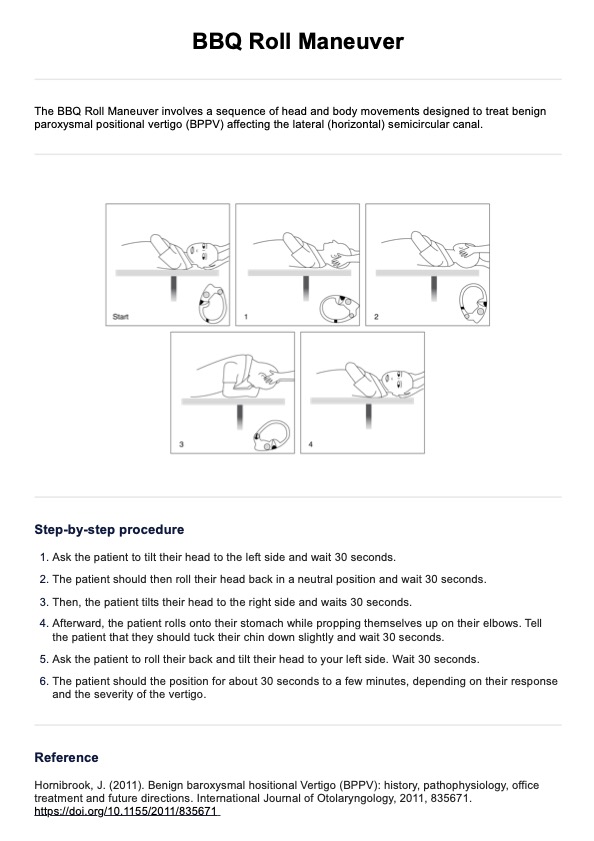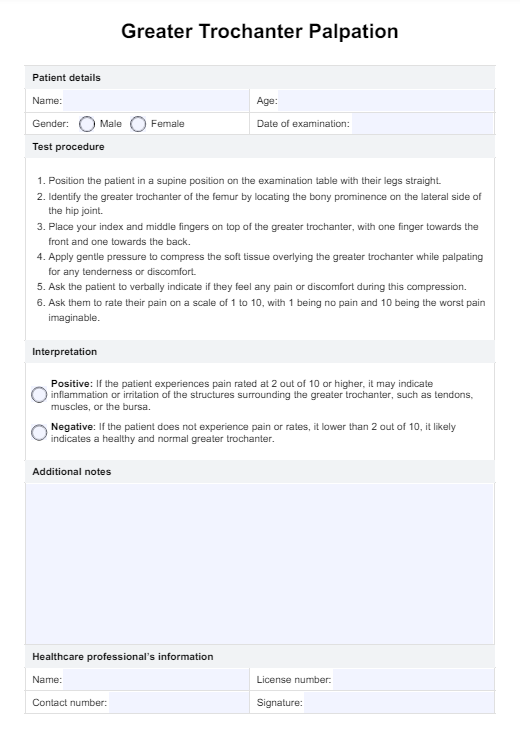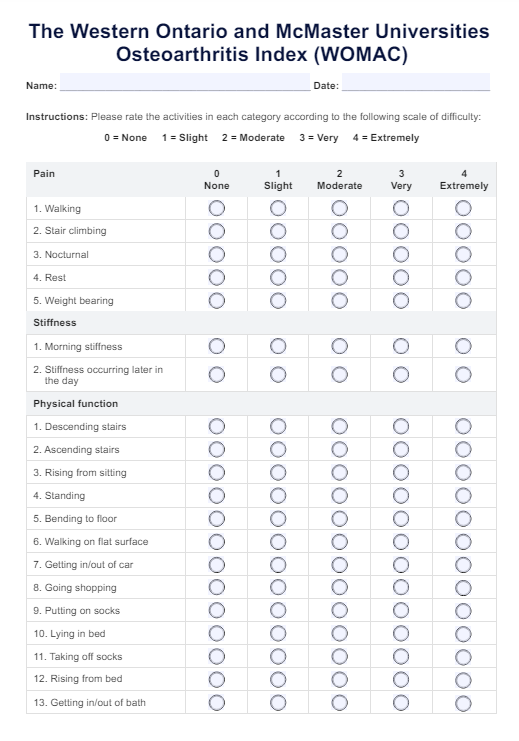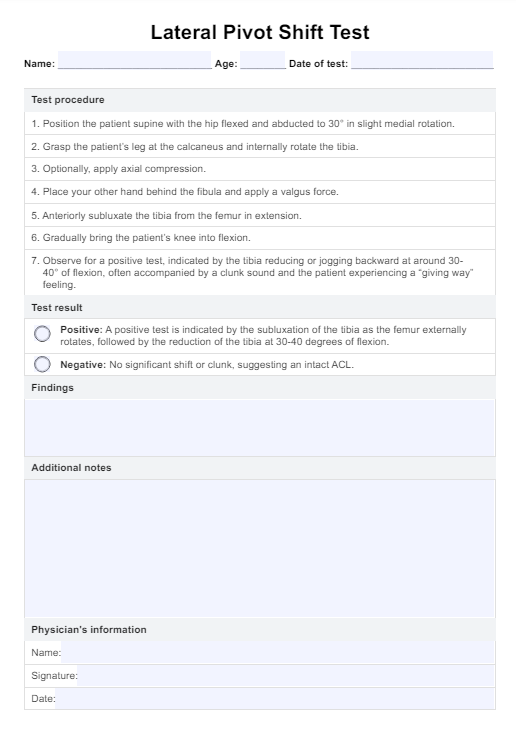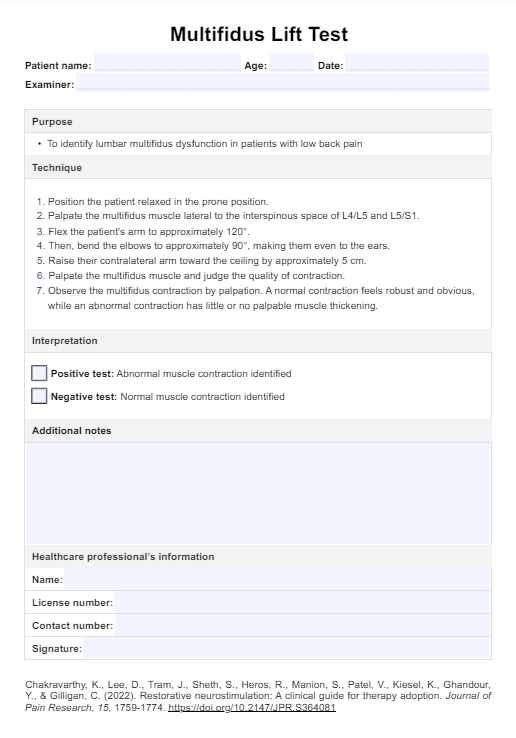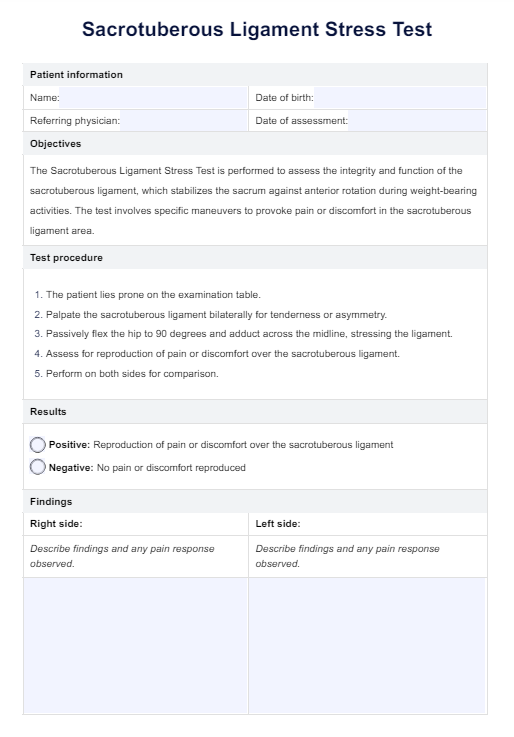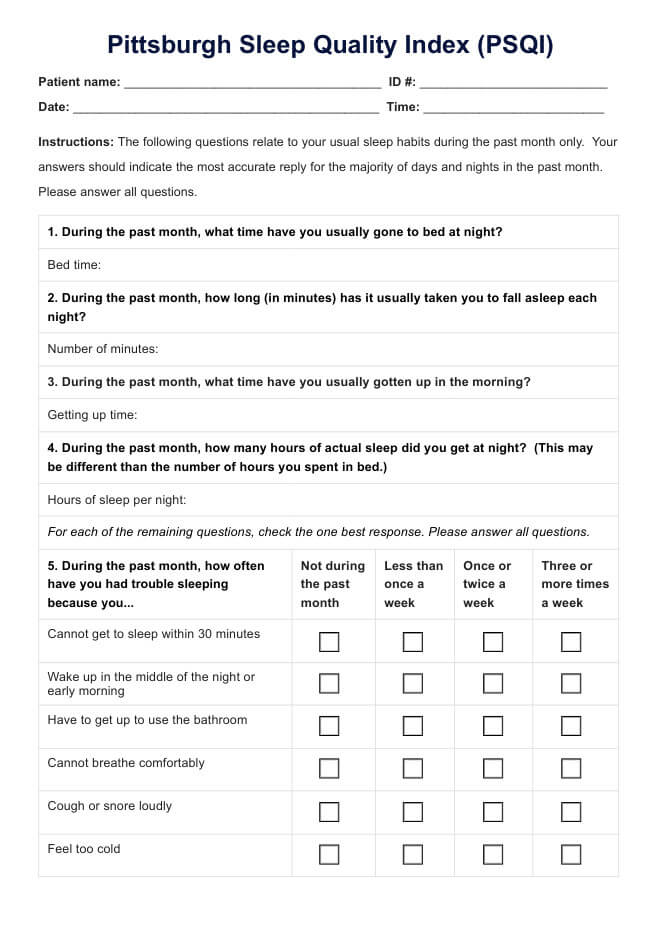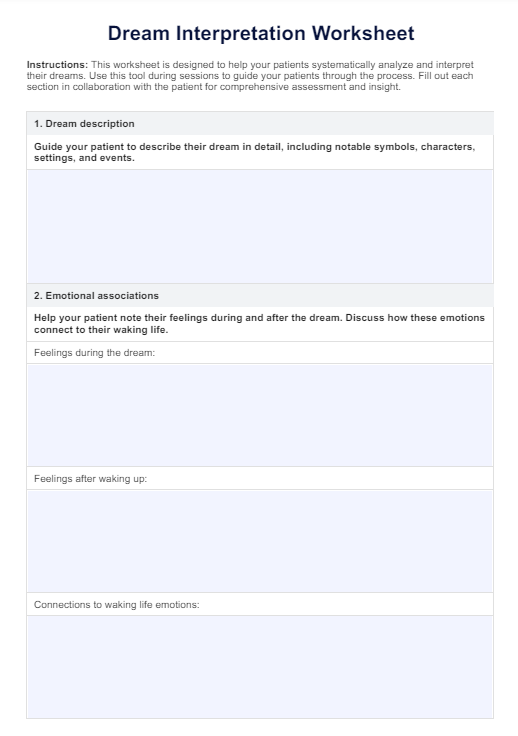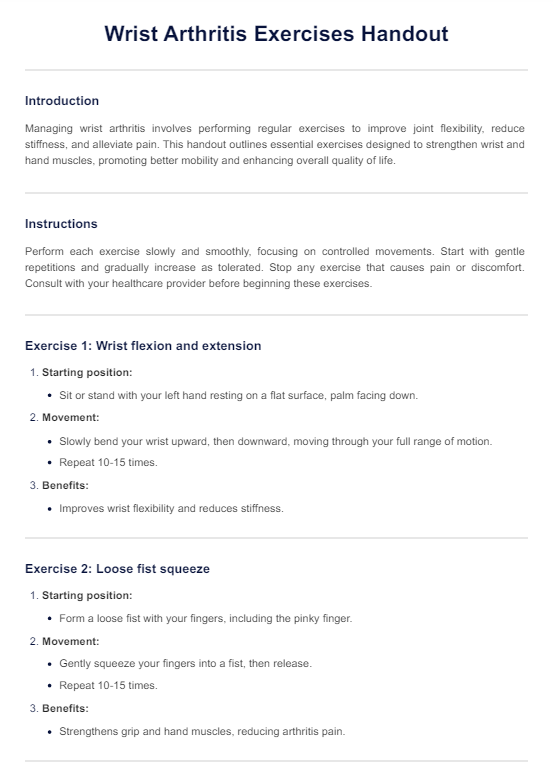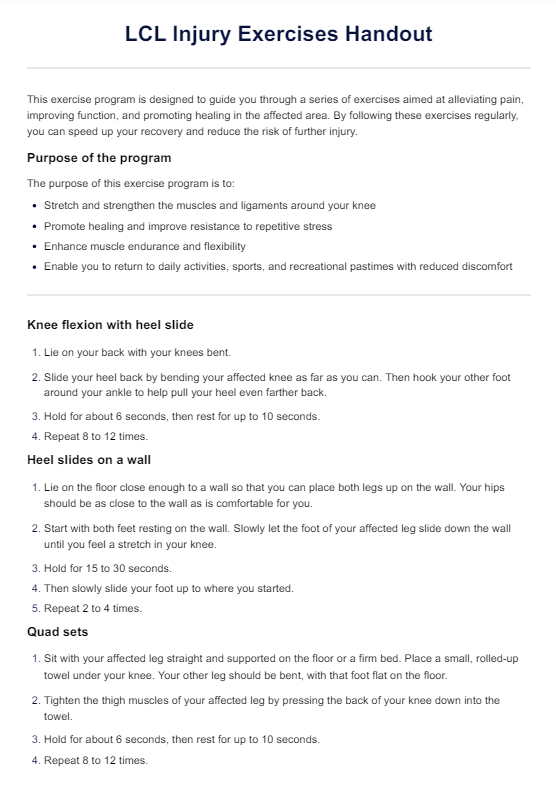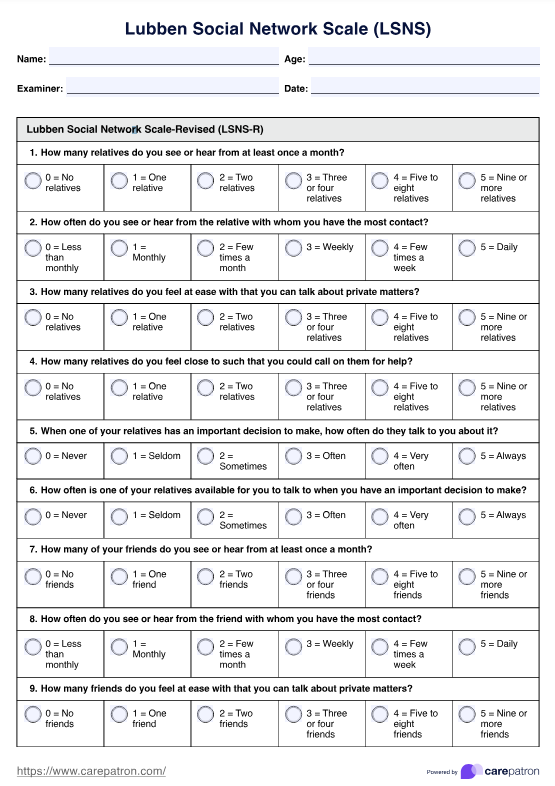Flourishing Scale
Use this Flourishing Scale template to measure a client's social–psychological pros- perity. Incorporate this in your assessment toolkit for free.


What is the Flourishing Scale?
The Flourishing Scale is an 8-item self-report tool for assessing psychological well-being offering a simple yet effective way to evaluate an individual’s aspects of well-being, such as relationships, self-esteem, purpose, and optimism (Diener et al., 2010).
By evaluating how individuals view their own success in these areas, the Flourishing Scale offers valuable insight into their life satisfaction. It captures important dimensions of well-being, which are often measured to complement existing measures. It is rooted in the idea that negative feelings are inversely related to well-being, and an individual’s perception of their success in various life areas can significantly influence their overall sense of fulfillment. The scale’s brevity and practical usage can make it suitable for a wide range of populations, and it can serve as a foundation for further future research on well-being and its impact on both mental and physical health.
Flourishing Scale Template
Flourishing Scale Example
How to use our Flourishing Scale template
Our Flourishing Scale template is designed to help healthcare professionals easily assess a patient’s psychological well-being. Here are simple steps to follow:
Step 1: Access the template
To begin using the Flourishing Scale, simply click on "Use template" to open it within the Carepatron platform. Alternatively, you may click on ''Download" to obtain a PDF ready-to-print version.
Step 2: Discuss how the scale works with the patient
Before conducting the assessment, explain to your patient how the Flourishing Scale works. Clarify that they will rate statements on their self-perceived success across areas such as relationships, personal growth, and optimism. This ensures they understand the purpose of the scale and feel comfortable with the process.
Step 3: Conduct the assessment
Guide your patient through each of the statements on the Flourishing Scale, asking them to select a number from 1 to 7 based on their agreement with each statement. Allow them time to reflect on each question to provide an accurate response that reflects their self-perception.
Step 4: Calculate the score
Once the assessment is complete, calculate their total score. A high score indicates an individual possessing numerous psychological assets and strengths. You may refer to the scoring section of this guide to help you.
Step 5: Provide patient education and next steps
After reviewing the score, provide feedback regarding the respondent's self-perceived success. If necessary, offer guidance on how to improve areas with lower scores, such as fostering better relationships, boosting self-esteem, or enhancing optimism. Consider discussing additional resources or support if the patient’s score indicates the need for further intervention.
Scoring and interpretation
The Flourishing Scale provides a total score based on the responses to its eight items. It uses a 1–7 scale from strong disagreement to strong agreement, with all items positively framed. The response scale are as follows:
- 1 - Strongly disagree
- 2 - Disagree
- 3 - Slightly disagree
- 4 - Mixed or neither agree nor disagree
- 5 - Slightly agree
- 6 - Agree
- 7 - Strongly agree
To calculate the score, total the client's answers for all eight items. The score ranges from 8 (lowest possible) to 56 (highest psychological well-being). A higher score reflects greater psychological resources and strengths.
Benefits of using the Flourishing Scale template
Using the Flourishing Scale template offers several advantages in assessing and supporting patients' mental health and well-being. Below are three key benefits:
Saves you time
Using a Flourishing Scale template saves you tons of time because you don’t have to worry about creating or formatting it yourself. I’s already set up and ready to go. It keeps everything consistent and makes scoring easy, so you’re less likely to run into mistakes. Plus, you get to spend more time analyzing the results and less time dealing with the setup.
Facilitates early identification of issues
The scale assists you to identify early signs of low well-being or psychological distress. This can be crucial for sustaining flourishing and providing timely interventions. Early identification of areas such as low self-esteem or weak social connections can lead to more targeted care and support, enhancing a patient's journey toward better mental health.
Supports the development of a personalized human flourishing program
By highlighting specific areas where individuals may need support, the Flourishing Scale along with other well-being measures, helps healthcare providers create tailored plans for improving life satisfaction and personal growth. Whether it’s enhancing social relationships or promoting positive life perspectives, the results from the scale can serve as a foundation for a comprehensive human flourishing program, leading to long-term improvements in life satisfaction and well-being.
Reference
Diener, E., Wirtz, D., Tov, W., Kim-Prieto, C., Choi, D., Oishi, S., & Biswas-Diener, R. (2010). New well-being measures: Short scales to assess flourishing and positive and negative feelings. Social Indicators Research, 97(2), 143–156. https://doi.org/10.1007/s11205-009-9493-y
Preguntas Frecuentes
The Flourishing Scale is an 8-item self-report measure that evaluates a person’s self-perceived success in key areas of life such as relationships, self-esteem, and optimism.
An example of human flourishing includes having positive relationships, a sense of purpose, high self-esteem, and optimism about the future. It represents a state where an individual is thriving both mentally and physically, experiencing a sense of fulfillment and well-being.
The mental health continuum model provides a broader range of understanding mental health. It illustrates well-being as a spectrum, with positive mental health and mental illness at opposite ends, allowing individuals to move along it as their circumstances change. Its inclusive nature reduces stigma by providing a place for everyone, while its simple categories make it easier to communicate one's current state and acknowledge that change is always possible.


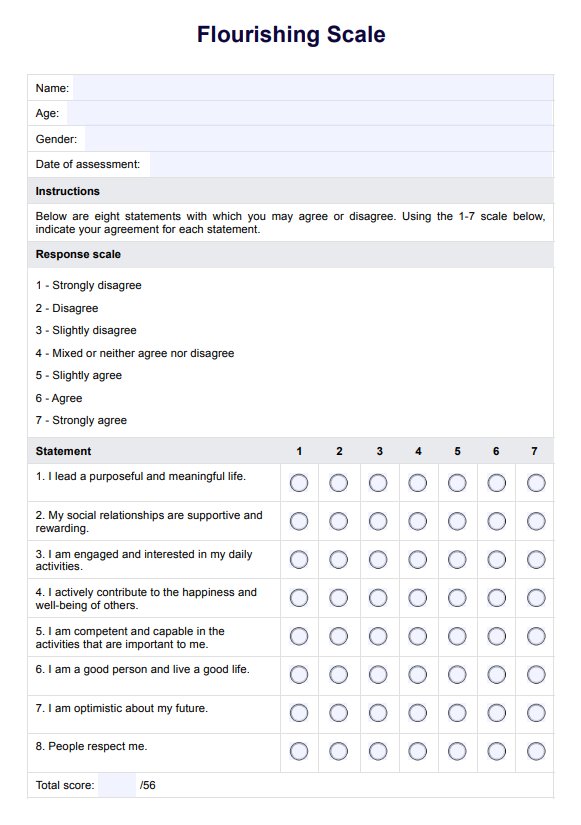
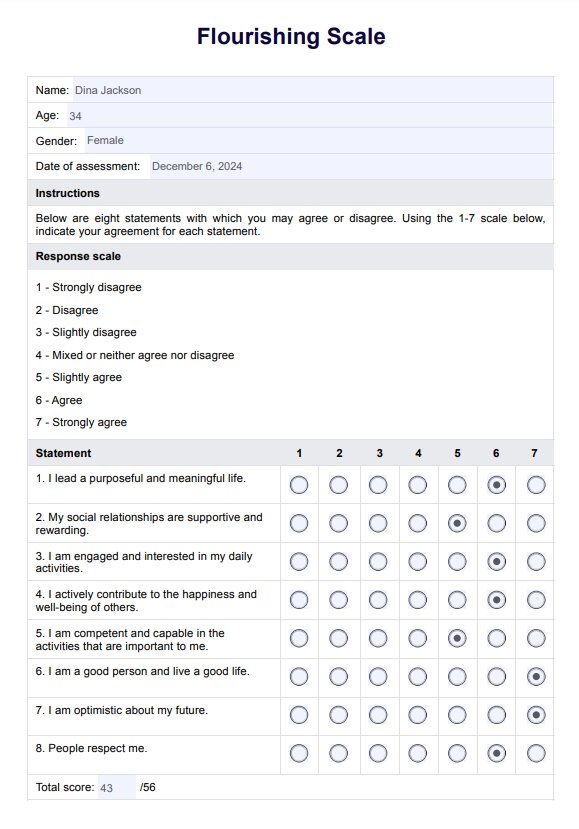

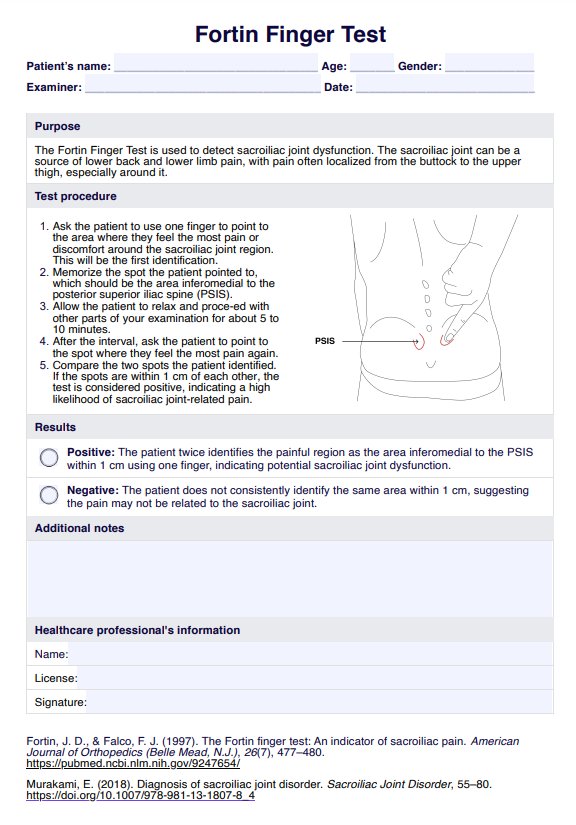
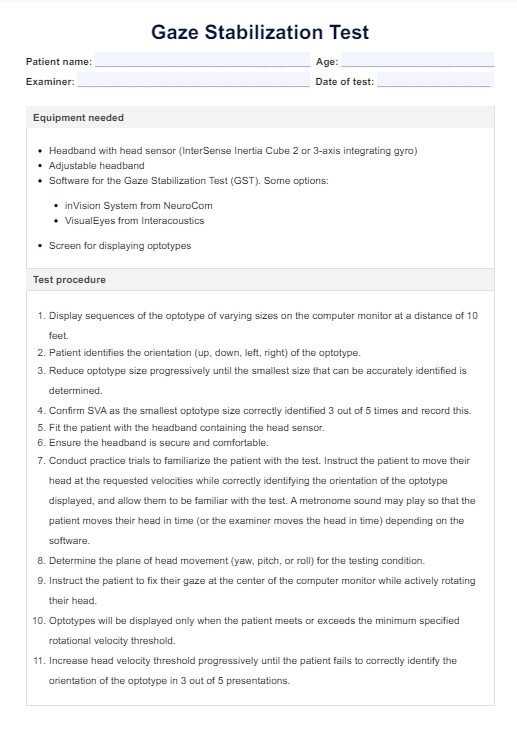
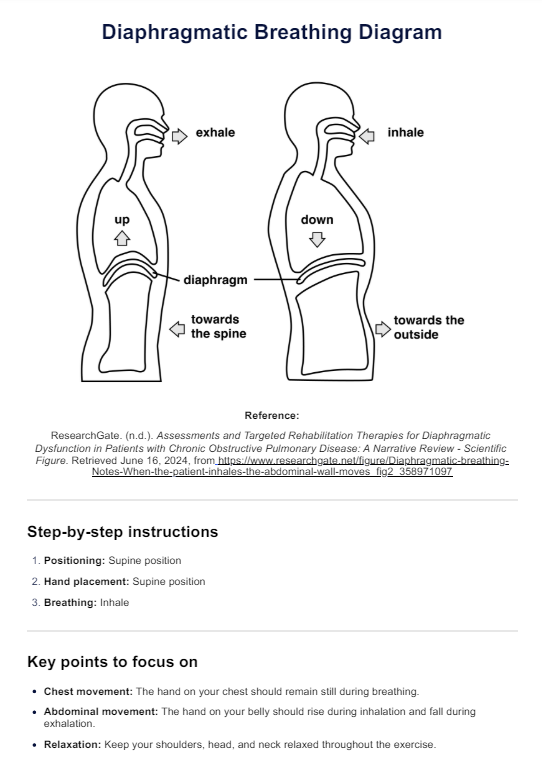
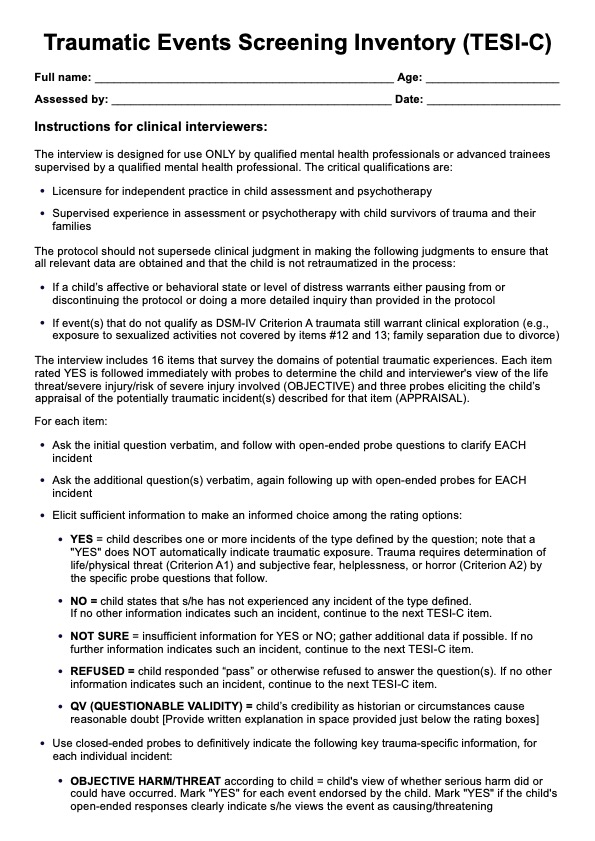
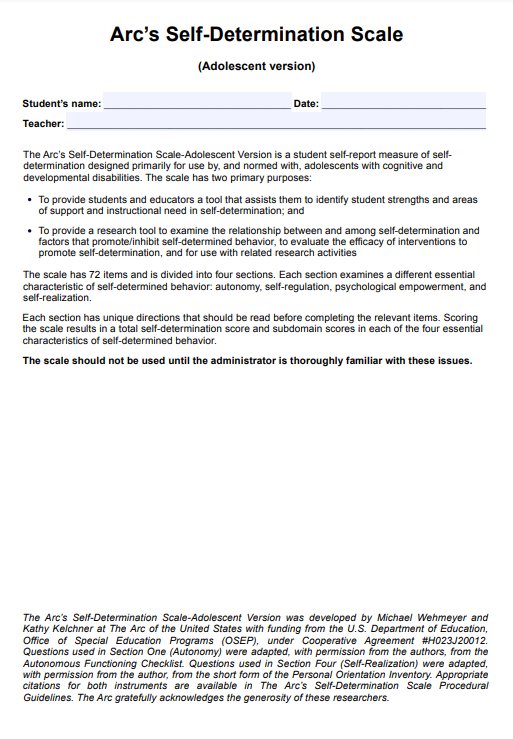
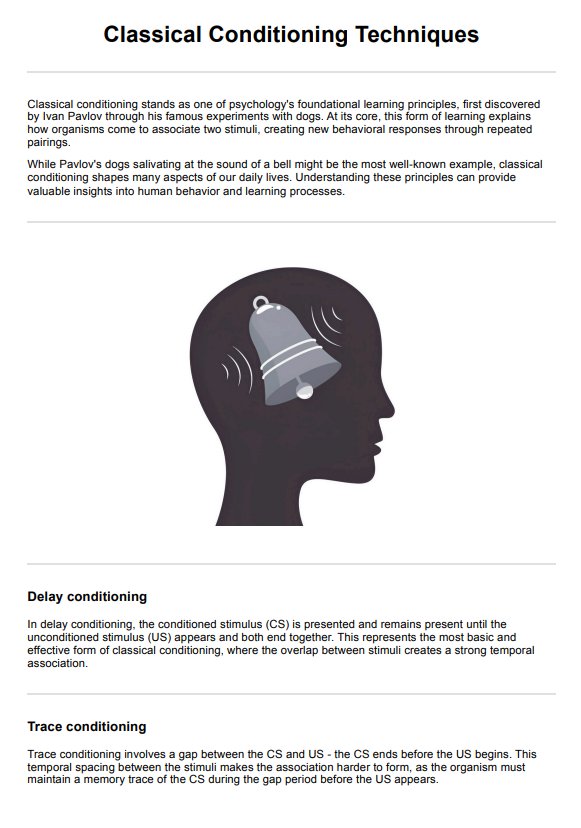
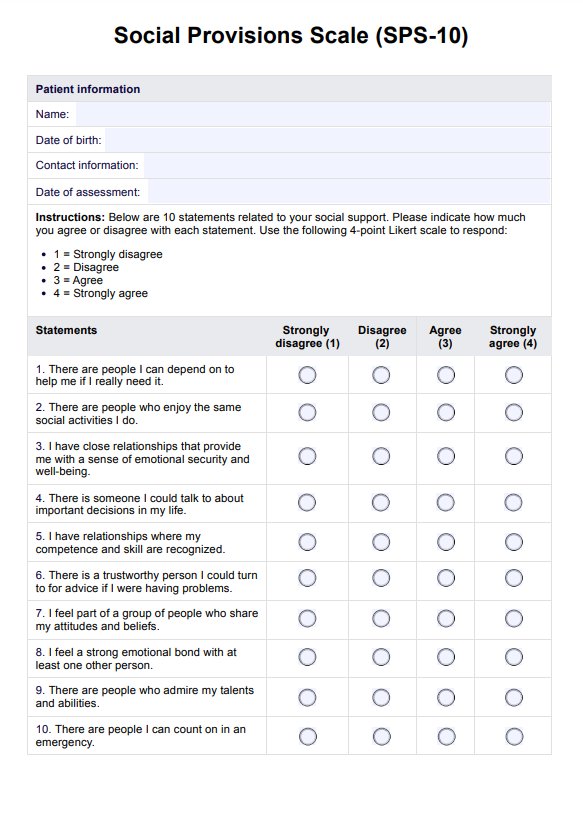

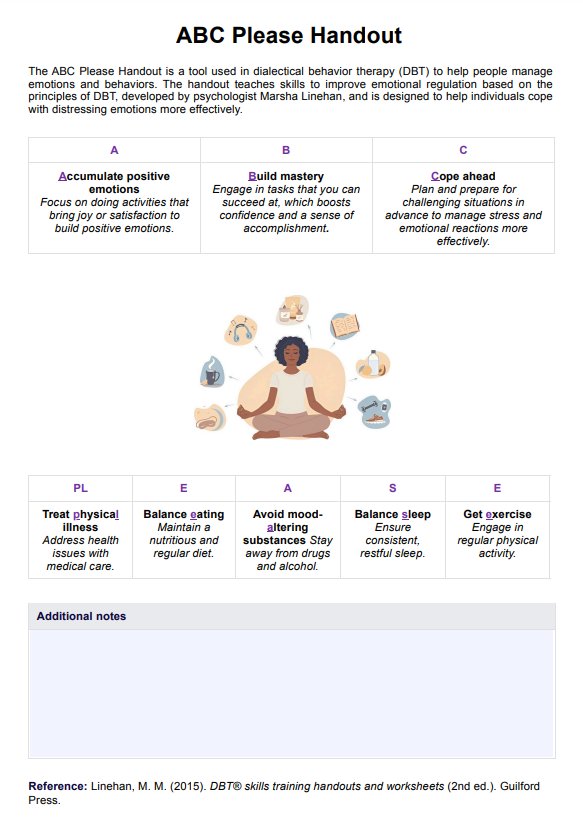

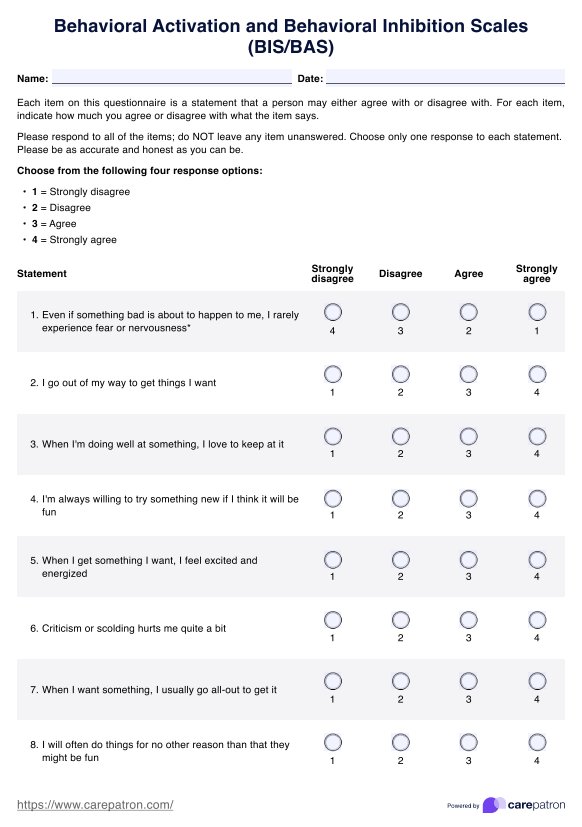
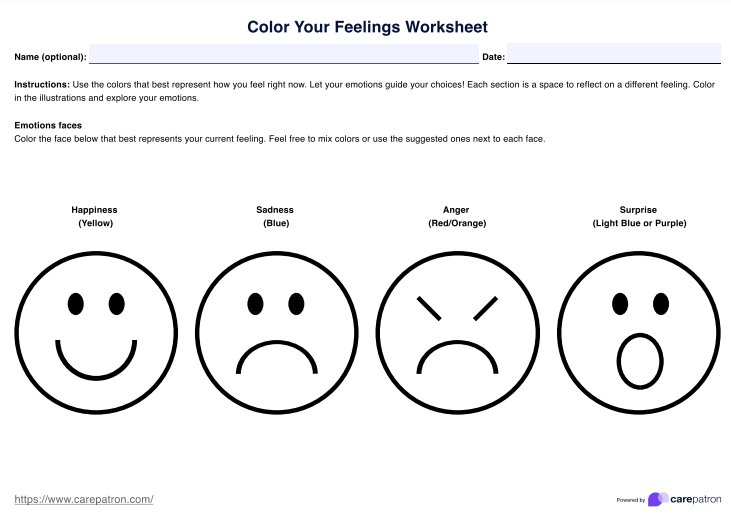
-template.jpg)
